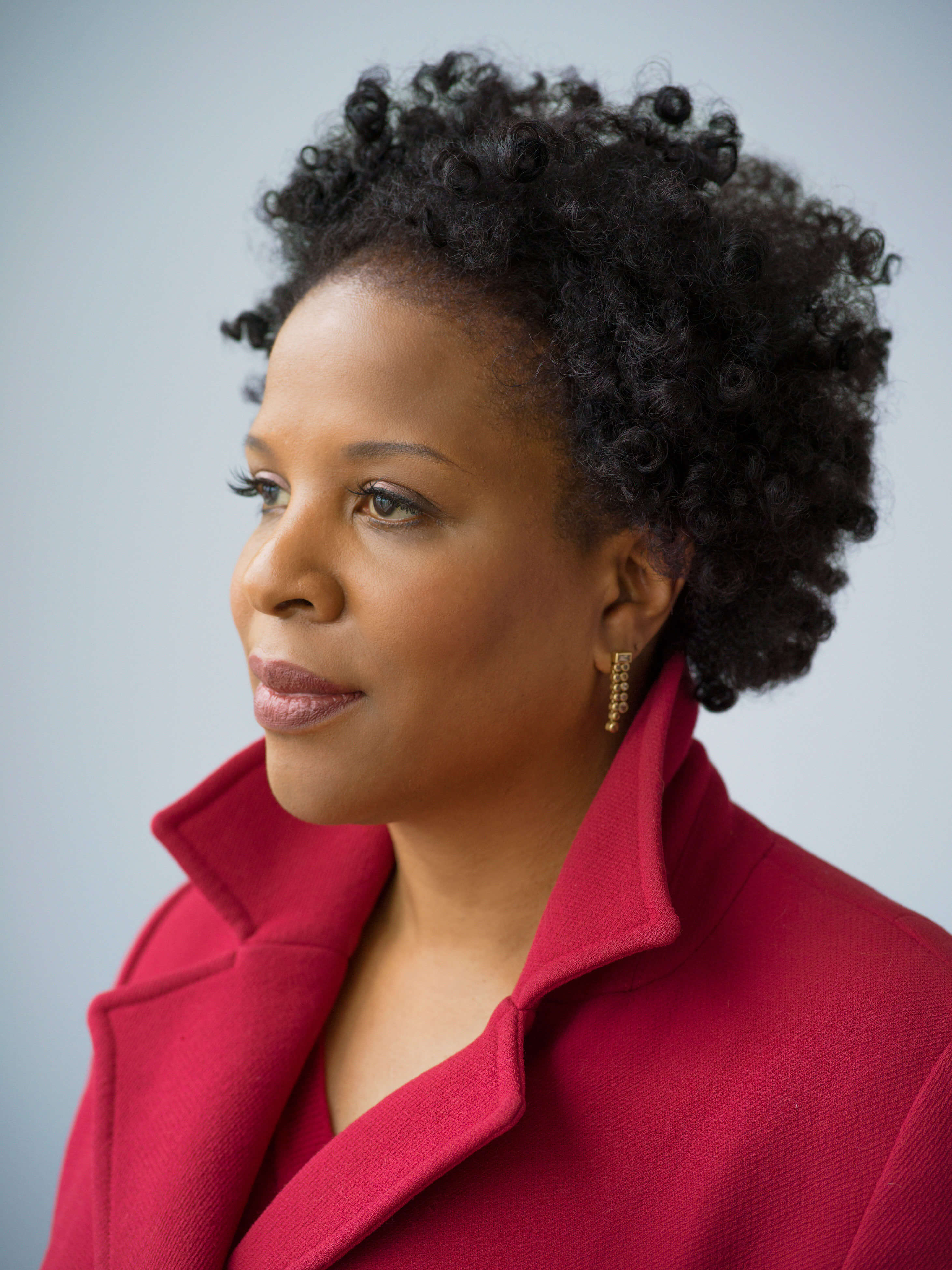 Midwestern Gothic staffer Carrie Dudewicz talked with author Tayari Jones about her book An American Marriage, her identity as a Black American, the timelessness of American conflicts, and more.
Midwestern Gothic staffer Carrie Dudewicz talked with author Tayari Jones about her book An American Marriage, her identity as a Black American, the timelessness of American conflicts, and more.
**
Carrie Dudewicz: What’s your connection to the Midwest?
Tayari Jones: I have a special relationship with Urbana, Illinois. My parents met there at an NAACP meeting on the campus of UIUC. This was in the sixties. Love at first sight, married just a few months later! It’s also where I took my first tenure track job.
CD: Even though your time in the Midwest was relatively short, do you find that the experience of it impacts your writing?
TJ: Now that you mention it, I think so. When I lived in the Midwest — Urbana, Illinois and Iowa City, Iowa, I was constantly struck by the extremes of weather. It gave every day a sort of drama. A good novel should feel like that — a unpredictability waiting just under the surface.
CD: Much of your writing revolves around families. Why is this such a strong theme in your work? What works well when writing about the relationships between family members?
TJ: Well, I am a member of a family. As a matter of fact, I was born into one! But seriously, I think that each of us is brining into the middle of a family saga of some type. I’ve always been fascinated by this.
When writing about families, the key is to remember that each character has a different role in real life than they occupy in family life. This dual identity should always be a source of tension.
CD: Your recently-released novel, An American Marriage, is about the conviction of an innocent man. In the light of current political events — specifically police brutality against innocent people of color — how important is it that stories like this one are told?
TJ:
It seems from your question that you already know the answer. I don’t think the real issue here is whether such stories should be told, but the more challenging question is how the story is best told. I tried to approach this story by concentrating on the characters — their personalities, back stories, and idiosyncrasies. I made sure that they were more than their predicaments.
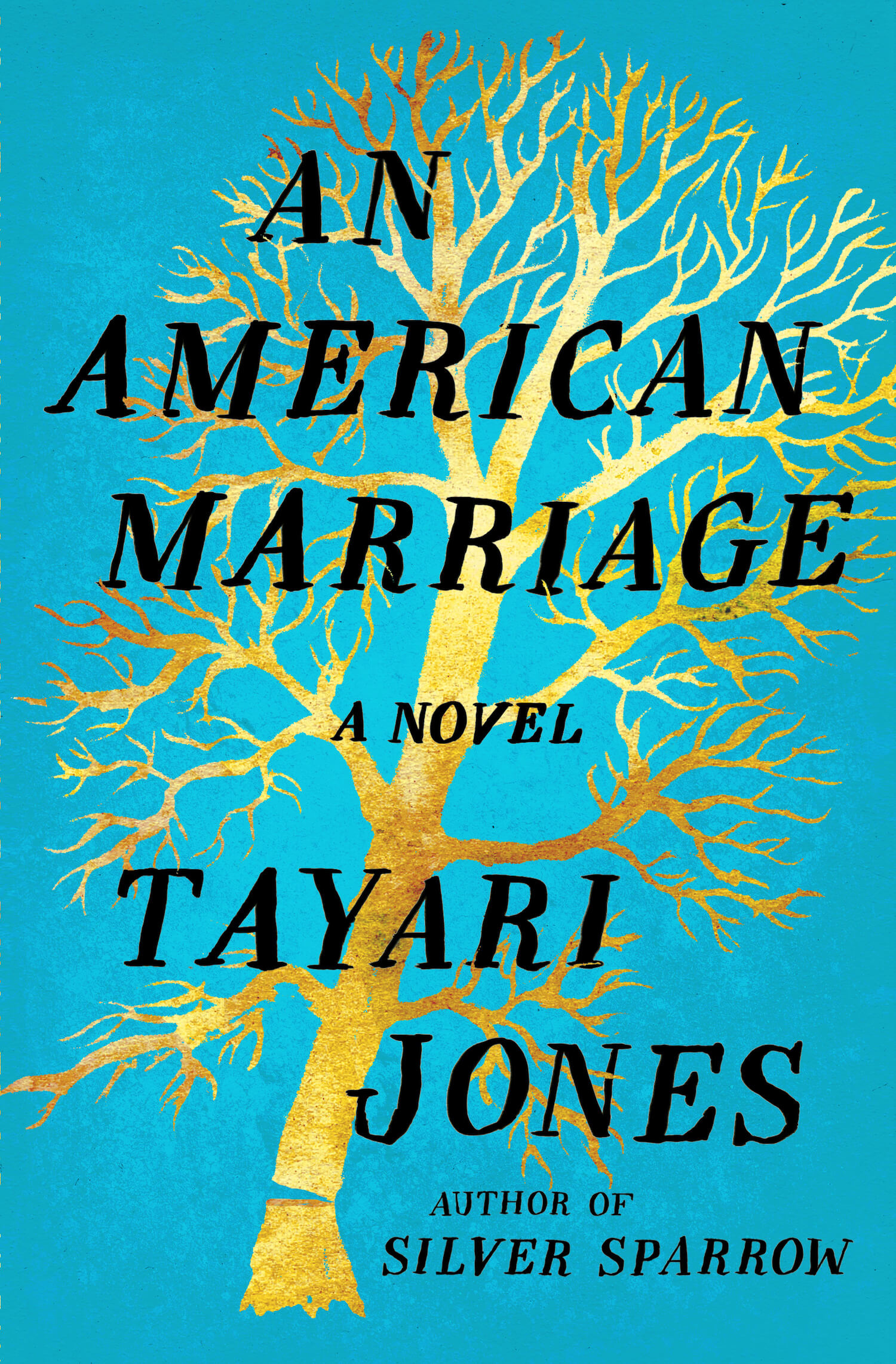
CD: Two of your previous books are set in the 1980s, whereas An American Marriage is set in the present. Why do the events of your latest novel fit into the present better than into the past?
TJ: Actually, the conflicts of the story — love, marriage, prison — these events can fit in any time period. I think the stories are moving into the present as I get older. My characters are almost always my same age — born in 1970 or so. We’re just moving forward.
CD: You’ve lived many places around the country, yet all four of your novels are set in Atlanta, Georgia. Why do you keep returning to Atlanta in your writing?
TJ: Atlanta is the only place that I consider home. I was born there and the dynamics of the urban south provide endless inspiration. After all, it’s an under-explored subject. There’s so much room for a writer to grow.
CD: With the title An American Marriage, are you implying that this story is somehow unique to American people only? Or, why did you choose to specify “American” in the title?
TJ: When the came time came for a final title I did a lot of brainstorming and I threw out An American Marriage as a place to begin and I had no idea we would end with that title. I knew I’d like the vibe of it but honestly it felt like a very big title for my book. The editor liked it a lot, and everyone else did too, but I was apprehensive. I thought that An American Marriage sounded like a book about, say, white people in Connecticut getting a divorce. My editor asked me if I didn’t like the title because I thought it misrepresented the book, or was I, as a black writer, afraid that my ideas, my experience, my world, my culture, wasn’t capital-A American. I feel that for most of my life when I would see the word American, I didn’t think that it was talking to me. I think it was due to my alienation as a black American and in accepting this title I do feel that I am staking a claim for my characters, claiming space for this story. What happens to Celestial and Roy is completely American.
CD: What writers inspired you to write and why? What are some of your favorite books and why?
TJ: The author that has influenced me most is Toni Morrison. I read Song of Solomon at least every year. When I teach it, I’m that crazy English professor reading aloud with tears streaming down my cheeks. I love the way that Morrison takes the experience of average people and raises it to a mythological level. She can make an insurance salesman from Ohio seem like Icarus. But I am also deeply influenced by poets. When I was writing An American Marriage I read a lot of Neruda because of the way that he makes love poetry intersect with politics, never sacrificing one for the other. And I am also influenced a lot by writers of crime fiction. I love the way crime writers know that the point of the story is the story. I have read every word that Patricia Highsmith has written. My favorite of hers is her debut, Strangers On A Train.
CD: What do you wish you had known when you started writing?
TJ:
I wish I had known that writing is supposed to take a long time.
CD: What’s next for you?
TJ: Another novel, God willing.
**
Tayari Jones is the author of the novels Leaving Atlanta, The Untelling, Silver Sparrow, and An American Marriage (Algonquin Books, February 2018). Her writing has appeared in Tin House, The Believer, The New York Times, and Callaloo. A member of the Fellowship of Southern Writers, she has also been a recipient of the Hurston/Wright Legacy Award, Lifetime Achievement Award in Fine Arts from the Congressional Black Caucus Foundation, United States Artist Fellowship, NEA Fellowship and Radcliffe Institute Bunting Fellowship. Silver Sparrow was named a #1 Indie Next Pick by booksellers in 2011, and the NEA added it to its Big Read Library of classics in 2016. Jones is a graduate of Spelman College, University of Iowa, and Arizona State University. An Associate Professor in the MFA program at Rutgers-Newark University, she is spending the 2017-18 academic year as the Shearing Fellow for Distinguished Writers at the Beverly Rogers, Carol C. Harter Black Mountain Institute at the University of Nevada, Las Vegas.
February 15th, 2018 |
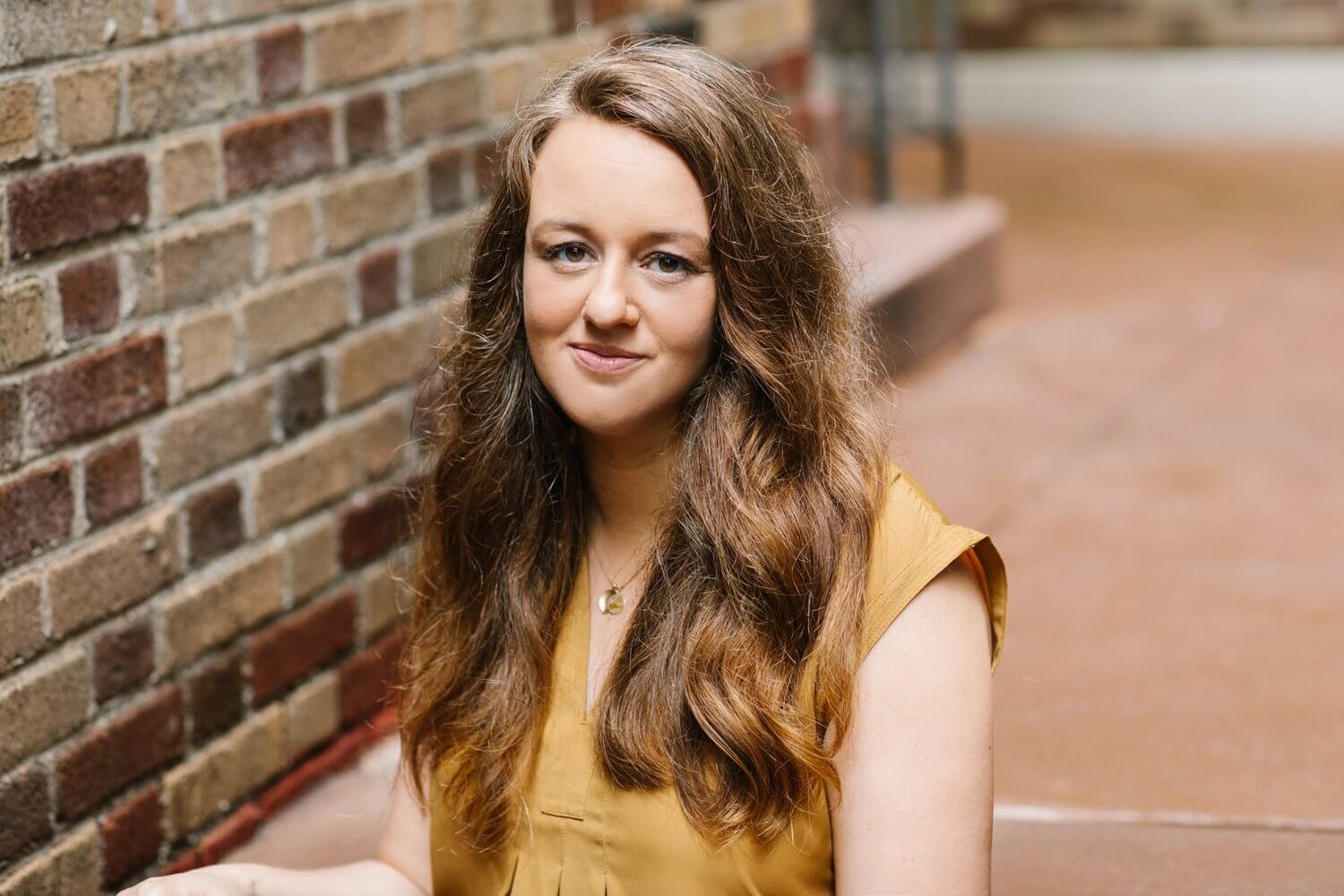 Midwestern Gothic staffer Carrie Dudewicz talked with author Danielle Lazarin about her book Back Talk, the relationships between intimacy and femininity, motherhood, experiencing the Midwest as a New Yorker, and more.
Midwestern Gothic staffer Carrie Dudewicz talked with author Danielle Lazarin about her book Back Talk, the relationships between intimacy and femininity, motherhood, experiencing the Midwest as a New Yorker, and more.
**
Carrie Dudewicz: What’s your connection to the Midwest?
Danielle Lazarin: I spent most of my advanced schooling years in the Midwest. My undergrad degree (in creative writing) was at Oberlin, in Ohio, and my MFA at the University of Michigan. I remained in Michigan for a few years afterward before moving back east. When I think Midwest, I think walking to a workshop through some amount of snow, in the most pleasantly nostalgic way.
CD: You spent a lot of time in the Midwest, but you’re from and currently live in New York. What are some of the differences you see between these two places? How did/does each place affect your writing differently?
DL: I have affection for much of the Midwest but wouldn’t say I feel at home there. Being an outsider bred curiosity about the kinds of things we take for granted about the places we are from: the landscape, and childhoods, and expectations, the way a day is lived. In Michigan specifically, I lived a more suburban life than I had in cities I’d previously settled in. The lack of population density — that I could be so easily isolated — did not sit well with me, and I felt more disconnected in the Midwest than I’ve felt elsewhere. I suspect, looking back, that those feelings were good for various stories that touched on themes of loneliness and longing for a different kind of life.
When I moved back to New York after 15 years living elsewhere, I was surprised at how deeply I felt connected to earlier versions of myself, as I was encountering a long-lost friend. Some of it was the basic sense of being home, of being comfortable in a way I never was when I lived in the Midwest or California. But some of it was quite literal, as I was retreading of the ground of my teenage life but in a different skin: as a mother and wife, as an adult — which helped me create necessary perspective on those experiences to write about them. I don’t think I could have finished the collection without moving home, or without feeling out of sorts in places like Michigan.
CD: Back Talk is your first published story collection, and it’s getting a lot of advance praise from many prominent writers for its portrayal of realistic women. How did you go about writing stories incorporating women whom readers can love and relate to? Obviously, it’s important that women are portrayed this way, but why do you think it’s so pressing to have a book like this one come out right now?
DL: My work has always been realistic; it’s my default mode. But realism is often messier than what many narratives offer us, particularly when it comes to how women should behave or want, and that is what I wanted to create on the page; women and men who were complex and believable. Plus, I don’t think realistic or true necessarily means lovable — we often love imperfect people.
As for relatable, I do hope some readers see a part of themselves in a character, but even more, I hope they have their own experiences expanded — or simply begin to believe that another experience exists. We have so far to go as a culture in making space for stories that are different from what we’ve seen. This is a small thing literature can do. I hope that the stories in Back Talk might give someone the fuel to write their own experience or the experience of women they know. The work of so many women writers has done that — and is still doing that — for me now.
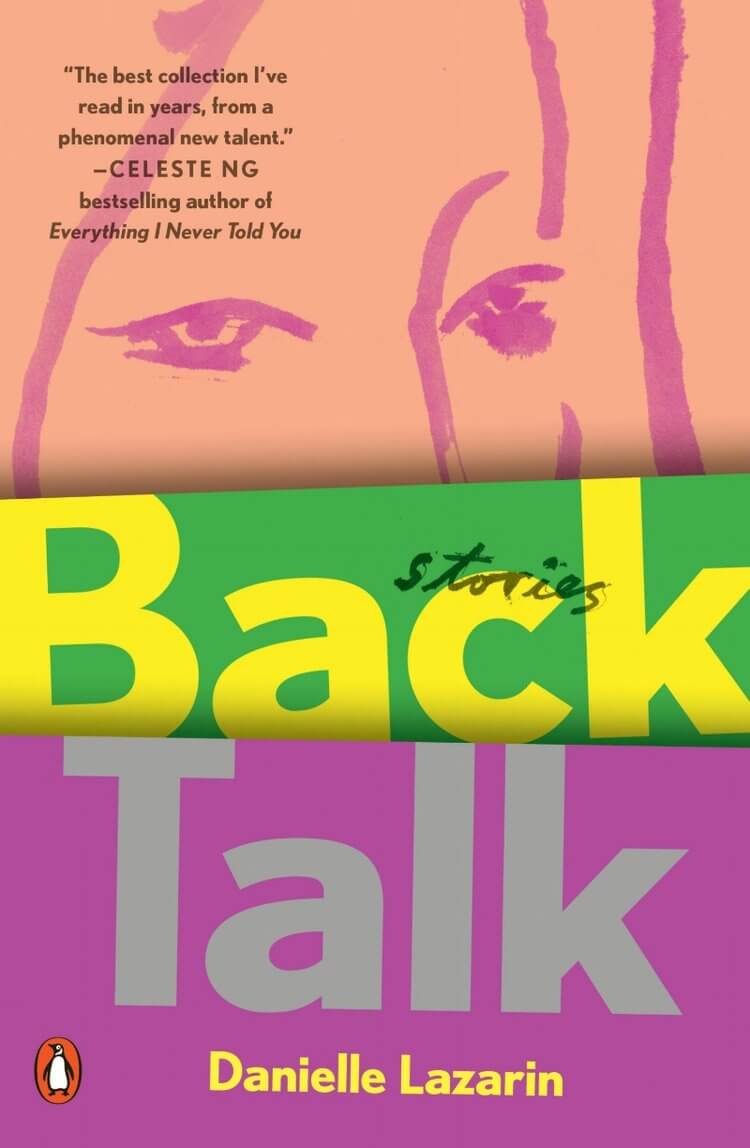
CD: In multiple stories of this collection, unexpected relationships arise between people — the seller of an apartment and the potential buyer, a widower and his babysitter. How did you come up with these unique relationships?
DL: In any city, but particularly for one as crowded and fearless as New York, you often bear witness to very private moments whether that is through apartment walls or passing someone in the street. Knowing when to respect that space and when to step into it is something I’m hyper-aware of as a native New Yorker. There’s a lot of story in how a character reacts or changes from those boundaries being loosened and crossed, in particular the empathy that is possible in those moments, between not-exactly strangers. Also, for this collection I thought a lot about the conflation of the feminine with intimacy and care taking — women often don’t ask for the intimacy they are in, and are assumed to be comfortable in it, when of course many of us are not — and so it seems natural that many of the characters in my stories find themselves in deeper than expected.
CD: Each of the stories in this collection revolves around common and/or un-extraordinary events, some of which are portrayed in a slightly different-than-normal light, and as mentioned in the last question, many are based around perhaps accidental, perhaps fleeting relationships. For example, Back Talk is about a hookup at a party between a girl, the narrator, and a boy she barely knows. What made you decide to title your book after the story Back Talk?
DL: The story itself contains a lot of themes that are important to my work: a young woman at a pivotal moment in a conversation with herself, disappointments, a moment of choosing silence or talking back, the consequences of wanting if you’re a woman, questions of power. I wanted, too, to turn that idea of what that phrase means — mouthy, rude, out of line — on its head some.
CD: You’ve said that some of the stories in this collection were written as long as ten years ago. How did it feel compiling a full book of stories? How did you decide which to include? In your opinion, how do the stories from when you were in grad school differ from the ones written more recently?
DL: It feels amazing to gather work that’s been ongoing for a long while, since roughly 2002. At some point I cut a couple of stories that centered on male characters, not simply for this fact, but because I couldn’t make them as strong as the others, and wanted to make room for more women in the collection. The more recent stories were, for the most part, quicker to write because I had simply gotten better at writing, and often knew sooner what I was aiming for in a story, what I wanted to say or how I would say it. I think they’re more direct, less afraid than my earlier stories (though some have been revised to be bolder than I could have been when I drafted them). They also benefit from the life experience I’ve amassed in that time, personal shifts and aging for myself and those around me, that opened me to new experiences less available to me in my mid-twenties, when I was in graduate school.
CD: How do you balance being a mother to two daughters with writing? How does being a mother affect your writing?
DL: Motherhood or writing is the day job, depending on the day. It gets balanced the way anyone with any other gig does it: flexibility, and in my case, lots of timers and reminders to segment my time. Parenthood ignited the sense of time passing (a.k.a. the inevitable march toward death); it reinforced the understanding that no one was waiting for my work. It made me more aggressive with both my subject matter and putting myself out into the world. I’d also say that early days at home with babies made my mind restless in a necessary way, and taught me how to use what time I had in a way that wasn’t possible for me in my pre-child life.
I’ve always written about women and girls and family life — most of the stories about young girlhood were in fact written before I had kids — but experiencing something I’d only imagined definitely heightened my work on the page. I gained a sense of my childhood from the other side, and an introduction to new universes of people and what they cared about and feared and the particular complications of family life. I began to think more carefully about the through lines of those stories. Here I was at playgroups and playgrounds and classrooms, with their attendant rules and expectations and cultures. In these spaces, all these women (and they were mostly women) were carrying the girls they were, how they had been mothered and wanted to mother themselves, what they’d given up and still wanted.
CD: What advice do you have for young writers?
DL: Make friends with other writers, seeking not just your best readers, but people with whom you can be forthcoming about your challenges and triumphs. I could not survive the particular weirdnesses of the writing life without my circle of support cheering me on and commiserating and doling out tough love when necessary, nor without doing this myself for them; it helps to be engaged in conversation with folks who help you see the big picture.
Believe in process over product. Don’t obsess over the number of words you put down or publications. Committing the time to the work is the most you can do, the little thing you can control. There’s no guarantee that you’ll produce what you expect in that time, but getting comfortable with being in that chair in a disciplined way is the best you can do, and it’s enough — whatever amount of time that is. Over time, that collective work will end up in your product, even if you delete a lot of the words.
CD: What’s next for you?
DL: I’m currently working on a novel about motherhood and women’s movements and memory.
February 8th, 2018 |
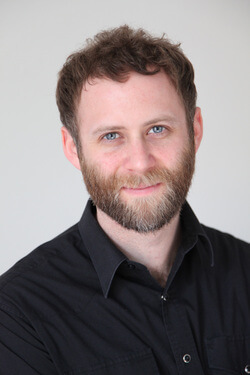 Midwestern Gothic staffer Carrie Dudewicz talked with author Will Boast about his new novel Daphne, the relationship between journalism and fiction, how to reconcile a Midwest identity with international travel, and more.
Midwestern Gothic staffer Carrie Dudewicz talked with author Will Boast about his new novel Daphne, the relationship between journalism and fiction, how to reconcile a Midwest identity with international travel, and more.
**
Carrie Dudewicz: What’s your connection to the Midwest?
Will Boast: An unusual one, perhaps. I was born in England and grew up partly there and in Ireland. When I was seven, we moved to Wisconsin for a job my dad was offered here in the States. We essentially came sight unseen, and I remain the only member of my extended family living in the U.S. I went to grade school and high school in Wisconsin and college in Illinois. Then I lived in Chicago for a couple years, before hopping around a bit geographically. Now I’m back in Chicago, where I have a teaching gig at the University of Chicago.
CD: You’ve lived all over the world — the UK, Germany, New York City, the west coast, Rome, and more. How does your experience as a world traveler affect your view of the Midwest? What is most striking about the Midwest to you?
WB: Until I was about seventeen or eighteen, I would’ve called England my real home, even though I hadn’t lived there for over a decade. Later, I felt a Midwestern identity quite fiercely, especially when I was living in San Francisco — which I’d moved to along with several Wisconsin friends — in a kind of strange and abrupt exodus. Regional identity — really any kind of identity — is such a slippery thing that we often seem to define it in the negative. I know who I am because I’m not this other thing, I’m not of some other place or position. Sometimes that’s powerful and necessary; and sometimes, of course, it’s absurd and even dangerous.
I suppose I would ascribe some truth to the things that get commonly said about Midwesterners — that they invest fairly heavily in decency and friendliness, while at the same time being less demonstrative and more guarded than those in other parts of the country. Then again, if I visit L.A. (or the Gambia or Myanmar), I’m usually bowled over by how surprisingly friendly everyone is. And a kind of watchful, proud, hunched stoicism is a trait that seems to get pinned to a lot of different cultures (often, it must be said, the ones in cold climates). So I’m not sure if these qualities are inherent to the Midwest (or any place), or if they’re perceptions that visitors bring with them. Or, I suppose, they might be borne out of that constant correspondence between inside and outside perspectives. Now I feel like I’m trying to paraphrase Calvino’s Invisible Cities!
I would say that, on a very broad level, I’m most struck by how much the Midwest keeps changing. German, Swiss, Swedish, and Irish immigration remapped the Midwest a hundred and fifty years ago. Now, of course, Midwestern towns and cities are just as likely to have sizable Hispanic populations, or H’mong or Somali or Yemeni communities and so on. I learned the other day that the suburbs northwest of Chicago support a semi-professional Indian cricket league. So, I’m often struck by just how multicultural the Midwest can be — but I think it’s more quietly multicultural than other parts of the world, if that makes sense.
CD: Is there a certain region/country/city that feels the most like home to you?
WB: To be honest, I’m either still searching for home or I’ve sort of given up on the idea. I haven’t really, truly unpacked and settled into one place over any other in maybe twenty years now. Most of my stuff has been in storage for nearly fourteen years. While I’m looking for ways to, you know, not keep living that way, I also have serious admiration for journalist pals who’ve, say, spent six months hiking Eastern European national parks to write a long feature. Or friends in the State Department who move to a new foreign capital every three years and learn an entirely new language along the way. I feel a bit like a homebody in comparison. Though that’s actually fine, because I sort of need to be in one place for a couple months at a time to get any real writing done.
At this point, I would say that there are a handful of cities I keep going back to again and again, and that in some ways that global City has become more home than anywhere else. A few years ago, I noticed that I was just as likely, even more likely, to see good friends in some random city, often abroad, that none of them actually lived in. I don’t think we’ve still quite reckoned, as a culture, with just how easy and cheap travel has become, how radically technology has changed how we communicate and live with one another over distance, and how unmoored certain parts of the population are from a geographic home.
CD: You’ve published short stories (Power Ballads, 2011) and a memoir (Epilogue, 2014), and your first novel, Daphne, is forthcoming in February 2018. Since you have experience in all of these genres, how does writing in each one differ from the next? Was writing one book more challenging than writing another and if so, how?
WB: Each form has its own demands, and you have to be cognizant that, for example, a character who can exist comfortably in a short story may not be large enough, to use a loose term, to sustain a novel. Or that the reader’s inclination to identify or sympathize with a first-person narrator doesn’t work quite the same in a novel as it does in a memoir. And there are a hundred other things that you’re learning, forgetting, re-learning, and playing with as you move from one form to the other.
It’s all challenging, beautifully so. Though I won’t go into detail about it, Epilogue was extremely difficult to write, and the difficulties didn’t stop once it was finished. I thought Daphne might be a bit of a reprieve, a chance to slip back into the slightly less revealing clothes of fiction. In some ways, however, Daphne is more autobiographical — even confessional. But maybe only to me or those who know me pretty well. So book tour will be a little less taxing this time around.
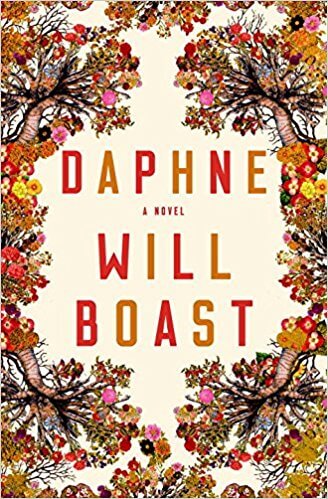
CD: Daphne is a reimagining of the classic Daphne and Apollo myth. What drew you to this subject matter, and to this myth specifically? Was it difficult to take a centuries-old story and transform it into something new?
WB: I was first drawn to the myth of Apollo and Daphne when I encountered Bernini’s sculpture (of the same name) at the Galleria Borghese in Rome. It depicts the very moment when Apollo, driven into a frenzy of lust by an arrow from meddling Cupid’s bow, is about to catch the river nymph, Daphne, who he’s been madly pursuing through her forest home. Daphne, in her terror, prays to be saved and is turned into a laurel tree. The sculpture, much like the myth, is ravishing, in both senses of the word, as lurid as it is beautiful, as beguiling as it is upsetting.
At some point, I made the connection between the myth and my Daphne, her struggle with high emotion and the way paralysis can be both a seizing up and a release — an escape. But I also wanted to recast the myth, to see it through Daphne’s eyes. I think we’re fascinated by myths because they feel so familiar and so foreign all at once. We see them as foundational, perhaps even primal, even though they were themselves part of a very particular culture. Recasting a myth speaks back to this deep cultural inheritance and asks what it still tells us, and what, perhaps, we would like to move beyond.
CD: In addition to all of your work in creative genres, you’re also a reporter and your work has been published in many reputable sources — The New York Times magazine, The New Yorker, Guernica, and many others. For you, what is different about writing creatively from writing journalistically? How does each type of writing inform others?
WB: I have an incredible admiration for journalists — real journalists — because I consider myself a novice in the form. I think the ambition, willingness, and/or courage to go out into the world and truly learn as much as you can and report back to the reader in ways that make us all truly more worldly is profound and necessary, now more so than ever. And to get fact-checked and really, really closely edited is one of my very favorite experiences as a writer. I think journalists, long-form narrative journalists especially, create as much as any poet or novelist does. They often experiment with form and language as much as “creative writers” do, and, likewise, they make meaning and understanding where, previously, there may not have been much. When you go into the field — when I reported on traditional nomadic sports in Kazakhstan recently, I spent a week in a literal field — you might talk to a hundred different people. And there are a hundred different ways to present what they tell you. By necessity, you winnow down what you find, but the best journalists keep as much complexity in as they can — just like the best poets, fiction writers, playwrights, and screenwriters do.
My admiration for journalists challenges me to do as much first-hand research as I can when I write fiction. The temptations to rely only on Internet research are high, but that kind of research often lends shallow results. Also, I think we live in a world where people are inclined to stake out an ideological position — often a very reductive and reduced one — and then simply look for any bit of information that makes their stance easier or more seductive to live with. I think it’s incumbent on any kind of serious writer to be more curious and patient than that.
CD: Advocacy is another important part of your career, as you’re a teacher at a refugee center in Rome. Why is this an important cause to you? What have you learned from your students?
WB: I spent a year in Rome on a fellowship that I was incredibly lucky to get. The previous summer the European migration crisis was very much in the news, and I knew that Italy was one of the centers of that crisis. I had two impulses that drove me to get involved. One was just the simple human concern we have when others are struggling and we might, in whatever tiny way, help out. The other was a journalistic concern, if you will, to learn more and report back. So I got in touch with this refugee center and offered my services, both as a teacher and a writer. I started teaching ESL there, once or twice a week, and continued for an entire year (and beyond, as an occasional sub). There was also some discussion of me leading a writing workshop at the center, but that became logistically difficult — mostly because the language barriers were so high, on my side as much as anything. Then I tried doing an oral history/storytelling project, which was partly successful but also, for various reasons, very tricky to pursue.
Because, really, most of the center’s guests come for very pragmatic needs: a meal, clothes, toothpaste, etc. There’s a big demand for help with language, especially English. And I felt that trying to gather and present stories (that were, inevitably, often about serious trauma) was compromising my effectiveness as a teacher. It became more important to me to be available to my students, foremost, as a practical resource. Though teaching was 95 percent of what I did at the center, I also helped with some of the “navigation”: helping people contact lawyers, attend appointments, and find other resources. And I ran a small study group for advanced students interested in continuing in or starting higher education. Actually, as I type this, I’m back in Rome for a month on a grant from Fulbright, helping with similar efforts at the center.
Reading and writing prose is, obviously, one of the best ways I know of understanding the world. But it can start to feel a bit solitary, even solipsistic, at times. I guess I’m a little hung up on the utility of what I do, and teaching at the center has been a great way to feel a little less selfish somehow. All of this said, I want to emphasize that are a lot of people far more involved with this kind of advocacy than I am. [COPY: I’m?] Also a novice in this realm!
What have I learned from my students? An incredible amount, and more than I can mention here, I’m afraid. Mostly I’ve learned, or continued to learn, how ignorant I am about the world.
CD: With your impressive and diverse bio, it’s obvious that you’re an extremely busy person. How do you balance all of these different jobs? How do these jobs connect or overlap? Where do you find joy in each of your jobs?
WB: Ha, thanks! To be honest, I feel incredibly lazy and idle most of the time. Ninety-five percent of this stuff gets written in my pajamas. There is no balance, really. Some things get finished relatively quickly, some take such an enormous amount of time and revisiting that despair is the only reasonable response to them. There’s a problem-solving element to writing prose, and I often find that really gratifying. My dad was an engineer, and I used to watch him have flashes of inspiration, sketch things out on a pad quickly, then spend weeks redrawing and recalculating. Strangely, I find word games and board games pretty tedious. But I really, really enjoy puzzling out a short story or an article or a novel chapter.
CD: What’s next for you?
WB: For now, I’m back to writing mostly fiction. I’m working on a second collection of stories and a new novel, both about travel and migration and how I think the 21st century has already redefined those concepts and literary traditions.
**
Will Boast is the author of, most recently, Daphne, a novel (Liveright/Norton, Feb. 2018). His fiction, reporting, and criticism have appeared in the New York Times Magazine, The New Republic, The American Scholar, and the Virginia Quarterly Review, among other publications. He’s held a Stegner Fellowship at Stanford and a Rome Prize Fellowship at the American Academy in Rome. He currently teaches at the University of Chicago.
February 1st, 2018 |
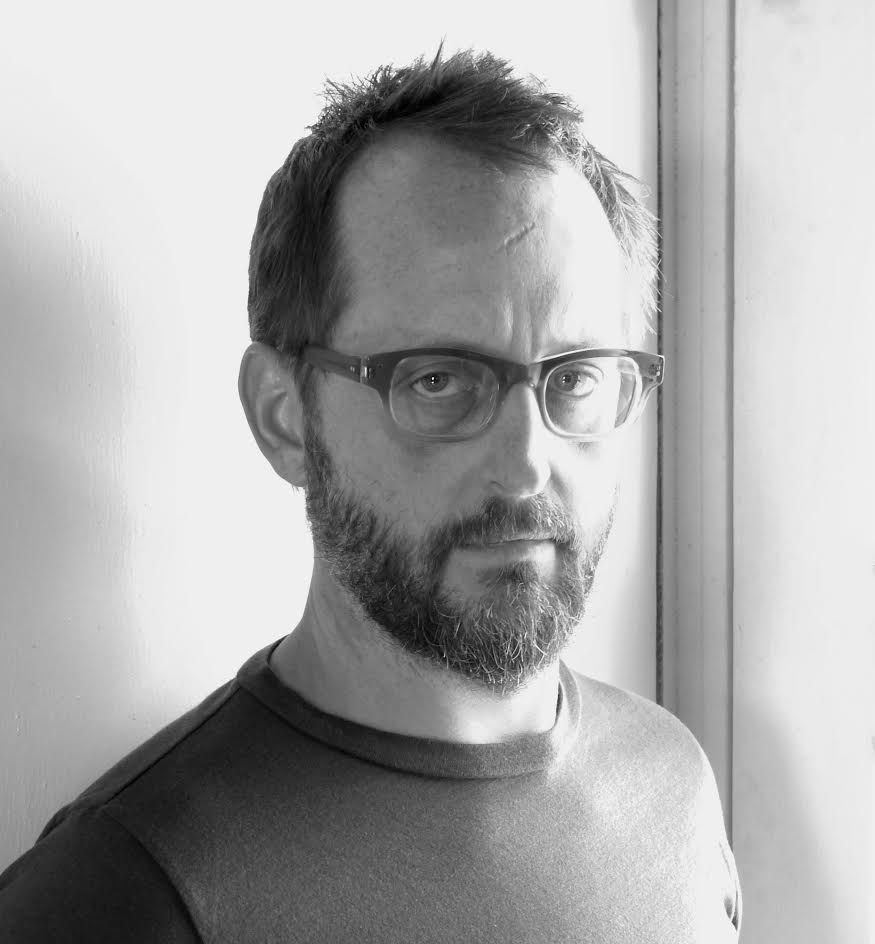 Midwestern Gothic staffer Sydney Cohen talked with author Mike Harvkey about his book In the Course of Human Events, Midwestern masculinity, the role of the cliché, and more.
Midwestern Gothic staffer Sydney Cohen talked with author Mike Harvkey about his book In the Course of Human Events, Midwestern masculinity, the role of the cliché, and more.
**
Sydney Cohen: What’s your connection to the Midwest?
Mike Harvkey: I was born and raised in rural northwest Missouri, about an hour from Independence (birthplace of Harry S. Truman) and spent the first two decades of my life in a pretty small town, surrounded by farmland and chicken coops. Several generations of my family lived in the Midwest, mostly in Missouri, but my father’s mother was born in Alabama. My mother’s mother was born in Missouri but her culture —e specially when it came to food — was pretty southern. We had biscuits and gravy every Sunday, okra, black-eyed peas, ham and beans, and this dish everybody just called “Grandma’s noodles.” Years later, when I lived in California, I went to a soul food restaurant for lunch one day and ordered chicken ‘n’ dumplings, which I’d never had. As soon as I took my first bite I thought, Grandma’s noodles! So my Midwest has a lot of the South in it. And the southern end of the state and the northern end are worlds apart, as are the western side and the eastern; Kansas City and St. Louis might as well be in different states. Once I learned more about Missouri’s history it all made sense. So it’s this view of the Midwest that fuels my writing. It’s complicated, conflicted, even puzzling in many ways. Not everything makes sense no matter how long you look at it. No matter where I live I’ll never really leave it as a source of inspiration.
SC: Your debut novel, In the Course of Human Events, explores the gritty underside of the American Midwest, set in a “town the American Dream forgot.” How would you describe the duality of the Midwest, and how does your novel complicate the idea of the American Dream?
MH: That duality is almost the defining feature of the Midwest for me. Just like I find Missouri both Midwestern and Southern, I find most of the men I knew growing up both tough and sensitive, hard and soft. Of course the soft side was typically only shown to the women in their lives. That’s a difference, as I see it, between the Midwest and the South. The Southern men I’ve known have a far greater access to their hearts and aren’t afraid of showing their hurt — even to other men; especially to other men. A lot of the men I knew in Missouri hid their sensitivity through exaggerated masculinity — bigger trucks, fewer words, a tougher mask on their faces. A friend of mine once said that you couldn’t tell by looking at my face what was going on inside — no matter what it might be. I said, “that’s just how men are where I come from.” My dad and uncles and brother and many of my friends — these are laconic, blue collar guys, often with a military background, who look about as rough as concrete but are more often than not very sensitive and caring individuals. This duality was something I was always aware of growing up. And I slotted right in. I was highly sensitive but did everything possible to appear tough. The masculine culture surrounded me like a mob — you either join in or suffer the consequences.
When it comes to the American Dream, I wanted to investigate how the Dream, like any mythology, is pure unto itself but in someone’s hands easy to corrupt. The vision of the Dream that is embraced by this family of white supremacists is as true to them as the vision of the dream embraced by my uncle who retired from the Ford plant.
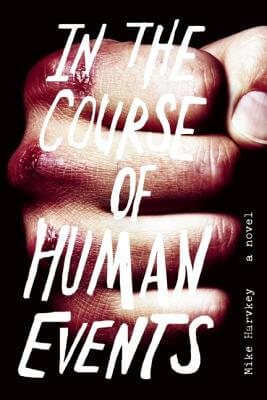
SC: In the Course of Human Events is also preoccupied by the mentor-apprentice dynamic, specifically with the characters Jay and Clyde. In the novel, Jay leads Clyde through a series of increasingly intense challenges that strengthen Clyde’s mental resolve, but also move him deeper into a world of criminality and extremism. How does your novel complicate the mentor-apprentice relationship? Is Jay a dangerous or righteous character?
MH: As much as my ego would like to think that my novel complicates the mentor-apprentice relationship I think it’s more honest to say that it just reveals it. The dynamic between Jay and Clyde goes back to the samurai age, when obedient and subservient “seconds” served their masters in life and death. A lot of people don’t know that when a samurai committed seppuku, the ritual disembowelment, his second would stand right behind him. After making the cuts across the gut, the samurai would hand the second his sword, and the second would cut the samurai’s head off — leaving a small sliver of skin on the neck so that the head would remain with the body. Then the second would kneel behind his dead master and commit seppuku himself. I guess his head got to stay on — a more agonizing death. I guess for me this, too, comes down to a system of practice or belief that can be interpreted and corrupted. Jay certainly abuses that existing structure to manipulate Clyde to become something useful to him. This happens every day on a large scale. The military is a system of belief and practice that exists to shape malleable young people, physically and mentally, according to the interests of someone else. The mentor-apprentice relationship has a long history of abuse, as far as I see it.
To me, Jay’s righteousness is what makes him dangerous.
SC: The novel also deals with radical extremism and passionate anger towards the government. How does your novel humanize the process of radicalization? Furthermore, how can your novel be read as a social commentary on radical extremism as a response to politics? How does satire reinforce this social commentary?
MH: I think In the Course of Human Events humanizes radicalization by popping the hood and allowing the reader to see the way the engine works. That process is the book’s plot, really. At some point in writing it I realized that I’d been toying around unconsciously with many of the steps involved in radicalization, and once I realized that, I was able to actually investigate the process fully and use the various steps along the way to increase causality. There are a lot of different processes of radicalization —from love to competition to the slippery slope concept — and I used them all. I really piled it on. Once I did that the book opened up to me and I could see how it could work. Clyde, the main character, is the beating heart of it all; the book’s point of view is his and we’re right there with him every difficult step of the way. I needed him to be a highly sympathetic character, pulled in two opposite directions—toward Jay and extremism and simultaneously toward his family and friends, good people who still believe in the Dream. At some point I realized that Clyde’s gripes had to be accessible, recognizable to readers. It couldn’t just be that he was racist. Racism is not only uncomfortable to write about; it’s difficult to understand in a dramatic sense that works in the kind of book I wanted to write. I didn’t want some clichéd “answer” to the question of these characters’ problem. Once I figured that out, the only question and answer was the economy. Maybe it’s a cliché. I saw an interview with the Coen Brothers talking about No Country for Old Men. Joel says that Carla Jean Moss’s character works at a Walmart. Then he says, “I don’t know if that’s a cliché but at least people know what we’re talking about.” So I see it like that, I guess. It’s not always the right thing to do to completely avoid the familiar. The familiar — or some familiar elements — can be a pathway into the book for some readers. A lot of people I’d known had been hit pretty hard by the downturn and it just made sense to use the factory moving overseas as the foundation of Clyde’s gripe. My brother worked in a Mr. Longarm factory and that factory did eventually close down and I just used those facts for my fiction. I hoped that by creating a recognizable foundation under the extremist position, the reader would be able to sympathize with it. In sympathizing, they become complicit, and then the reader connects in a very charged way with the characters.
Satire’s tough. I didn’t even understand that I was writing satire until quite late. And the book is complicated in this regard because some things are handled satirically and some aren’t. I couldn’t write about Walmart without making fun of it. Maybe that makes me a dick, I don’t know. But satire is another way to play around in the familiar. It’s like a shared wink between me and the reader — another way of laying a complicity trap. From the beginning I knew that I wouldn’t judge these characters, the white supremacists. I didn’t want to write a book with authorial judgement, where the reader could be let off the hook by a God-like intruding voice telling them that these characters were ridiculous and they didn’t have to take any of this shit seriously.
SC: What elements of your characters would you describe as specifically Midwestern? How would your novel be different if set in another region of the U.S.?
MH: Literally every aspect of these characters is typically Midwestern, from their haircuts and clothes to how they decorate their homes, to what they drive and where they shop and how they eat. And karate. When I was growing up karate was everywhere in the Midwest. I trained Shotokan for a couple years as a teenager with a guy called Machine Gun Mapes in Lee’s Summit. One of his black belts opened his own school in the Masonic lodge in my hometown and I trained there with him. There were guys I knew running classes out of their basements. It was everywhere. Clyde and his Uncle Willie share that tight-jawed laconic approach to conversation and that desperate suppression of feeling. Jay and his family are less like that, and J.D.’s manic style, which is a deflection technique, comes from a guy I know who spent a decade in prison. It’s a defense mechanism. I don’t think I would’ve been able to write this novel in a different part of the country. That would’ve required me to get to know an area in a way that I just don’t think I would’ve been able to know, for this subject matter. But I guess I could see a different version of this novel set in the south where all the men share their feelings, drink too much, and cry a lot. That could’ve been fun.
SC: In the Course of Human Events is your debut novel. What surprised or challenged you about the writing process? If you could do anything differently, what would it be?
MH: This was a hard novel to write, in part because it was the first novel I’d ever tried to write. It took five or six years, in the end. Some of those years I was working full time and writing only two or three mornings a week before work. Up at 5, write until 8, get going. What surprised me about those years was how much I was able to get done when the clock was ticking. I know the writer Dan Choan sometimes writes with a timer set for 15 minutes. He doesn’t allow himself to pause until that timer goes off. Some mornings once I got going I’d have an hour, hour and a half, and I’d manage 2,000 words. But in writing Human Events, I had to first figure out how to write a novel, then I had to figure out how to write this novel. That’s why it took me six years. When I started I had no idea of the story. It wasn’t even political in the beginning. It was just a domestic story about a passive guy marrying into a dynamic family. At some point early on I realized that that narrative wasn’t enough, for me. Then I remembered an argument I’d had with one of my best childhood friends. He’d just joined a militia and had read the conspiracy theory book, Behold a Pale Horse, which had had an enormous impact on him. He was trying to convince me of this, that or the other and I was pushing back and it ended badly and we didn’t speak for a good few years after that. But that argument had stuck with me, and the fact of this book’s impact on my friend. So another surprise was just about how our experiences and the various ideas that we are floating around with are probably a lot more connected than we might realize. I’m proud of the book. I don’t think it’s perfect. It was as good as I could make it given my abilities at the time. I ran out of steam in the end. The last thing I wanted to do was work another day on that book before it got published. But if I had it to do over again, I would’ve read the whole thing out loud and done another top edit. There are too many words.
SC: Who are some authors that inspire your work, and why?
MH: It used to be Cormac McCarthy until his language seeped its way into my writing and I had to stop reading him, though I love him still. In fact, my wife wrote in the margin of an early draft of my book, “Cormac called, he wants his language back.” Flannery O’Connor was one of the first authors who blew me away. She’s amazing, and the way she evokes place with the perfect detail is astonishing. Barry Hannah, Mark Richard, and Padgett Powell, also. For a while I thought I was a southern author and these people were to blame. James Salter and Christine Schutt both have a breathtaking economy in the way they move through time, just compression and grace and elegance. I’d love to be able to do that but just can’t. The book I would probably want to be buried with is Revolutionary Road. The more I read it the better I see it is. That this was a first novel just pisses me off. How was he able to pull that off? It’s crazy. It’s so, so good.
SC: What is your ideal writing environment — the sights, sounds, and smells?
MH: My wife says I have the nose of a bloodhound and I like comforting smells: pine, cedar, woodsmoke. So either I’ve got an expensive candle or I’m writing in a cabin in the Sierra Nevada mountains. I typically write early drafts by hand so all I need is a small space with a good chair that won’t destroy my back, a little stove, a wall where I can hang the structure and other macro thoughts, a bunch of books, endless coffee, and a footstool. A small desk would be handy but not totally necessary. It’s been tough having the perfect writing environment since I sold the book. My wife and I went traveling for a year before our books came out (her first book, Black Lake, was published a month before mine), slept in 20 different beds that year. Since then we just keep moving. We’ve moved three times in four years. Sometimes I get the spare room, if there is one, and sometimes she gets it. It’s only fair. Right now we’re living in a place that has a basement and I’ve sort of walled off a corner of it for writing. It’s dark and cold but I’ve got blankets.
SC: What’s next for you?
MH: I’m working on another novel set in the Midwest, in a town called Peculiar — which is real. It’s in the early stages and looks like it’s going to be brutal — the book more than the process. I’m also working on a bunch of stories and hope to have a collection together before too long. The last six months I’ve worked harder than I probably ever have doing research and reporting on a James Patterson true-crime book called All-American Murder about the football player Aaron Hernandez. It comes out January 22nd.
**
Mike Harvkey is the author of the novel In the Course of Human Events and a researcher-reporter for James Patterson & Alex Abramovich’s true-crime book All-American Murder. His writing has appeared in Esquire, Salon, The Believer, Poets & Writers, Nylon, Zoetrope, Mississippi Review and elsewhere. He’s the recipient of fellowships from the MacDowell Colony and Columbia University.
January 25th, 2018 |
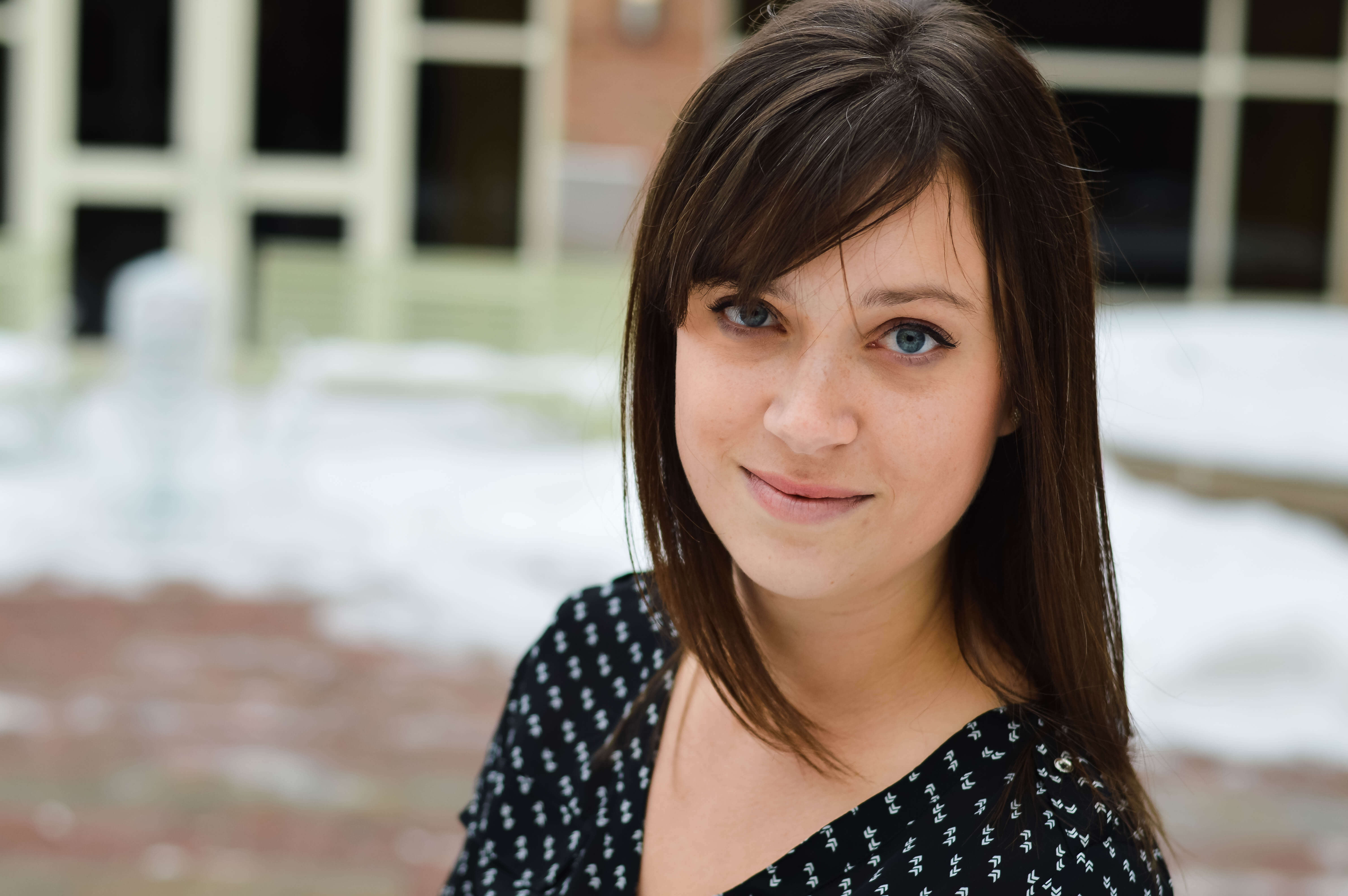 Midwestern Gothic staffer Carrie Dudewicz talked with author Jill Kolongowski about her book Life Lessons Harry Potter Taught Me, how to juggle writing, editing, and teaching, her becoming a nonfiction writer, and more.
Midwestern Gothic staffer Carrie Dudewicz talked with author Jill Kolongowski about her book Life Lessons Harry Potter Taught Me, how to juggle writing, editing, and teaching, her becoming a nonfiction writer, and more.
**
Carrie Dudewicz: What’s your connection to the Midwest?
Jill Kolongowski: I was born in a small town in Michigan, and lived there until I graduated from Michigan State University and moved to Boston for my first job. Now that I live in California, my connection to the Midwest feels even stronger—I feel like my whole identity was shaped by the long, gray winters and the summers in the lakes. It took leaving to realize that.
CD: You’re a writer, a professor at the College of San Mateo, and the managing editor at YesYes Books. How do you balance all of these roles? How do these different jobs connect to and influence each other?
JK: I don’t balance them. (Just kidding — kind of.) As far as balance, it’s not always terrific; I find I have to be very deliberate about how I spend my time. When I switch from grading papers to writing, or writing to editing — switching from one part of my identity to another — I attempt to close off the other parts of my brain. When I was writing my book, I sometimes spent 10 minutes meditating in between, or I had to move from my apartment to the library or a coffee shop, just to force my brain to switch gears and focus. It sometimes works, and sometimes doesn’t. It’s a balance I’m continually negotiating.
I grew up knowing I wanted to be a writer and editor, but insisting that I did NOT want to be a teacher. I had major stage fright and imposter syndrome. I still have stage fright and imposter syndrome, but when I received a teaching fellowship for my MFA, I fell in love with teaching. Now, I see teaching, editing, and writing as three prongs of the same impulse — loving writing, and wanting to share that with others. On some of my toughest teaching days, my students knock me over with their insight or their writing, which can shake me out of my own writing challenges and inspire me to do better. When I’m excited about a great writing day, or a breakthrough, or have read a new favorite essay, I share all of those with my students. I hope seeing me as a working, struggling writer can help them through their own struggles. And working with the innovative and boundary-pushing and blazingly insightful poets at YesYes makes me into a student, just reading and learning from them.
CD: YesYes Books is an independent press known for high-quality poetry, fiction, and art. What is the most rewarding aspect of being an editor at this press? How does it differ from other editing jobs you may have had in the past?
JK: The most rewarding aspect has to be the work I get to read (and the writers themselves!). The editors, KMA Sullivan and Stevie Edwards, somehow manage to find and amplify writers who not only make fresh and sharp and important work, but who are also wonderful, smart people to be around. I’m not a poet, but I feel like YesYes is giving me the poetry education I was too scared to seek out as an undergraduate. YesYes feels personal in a way that many other editing jobs have not.
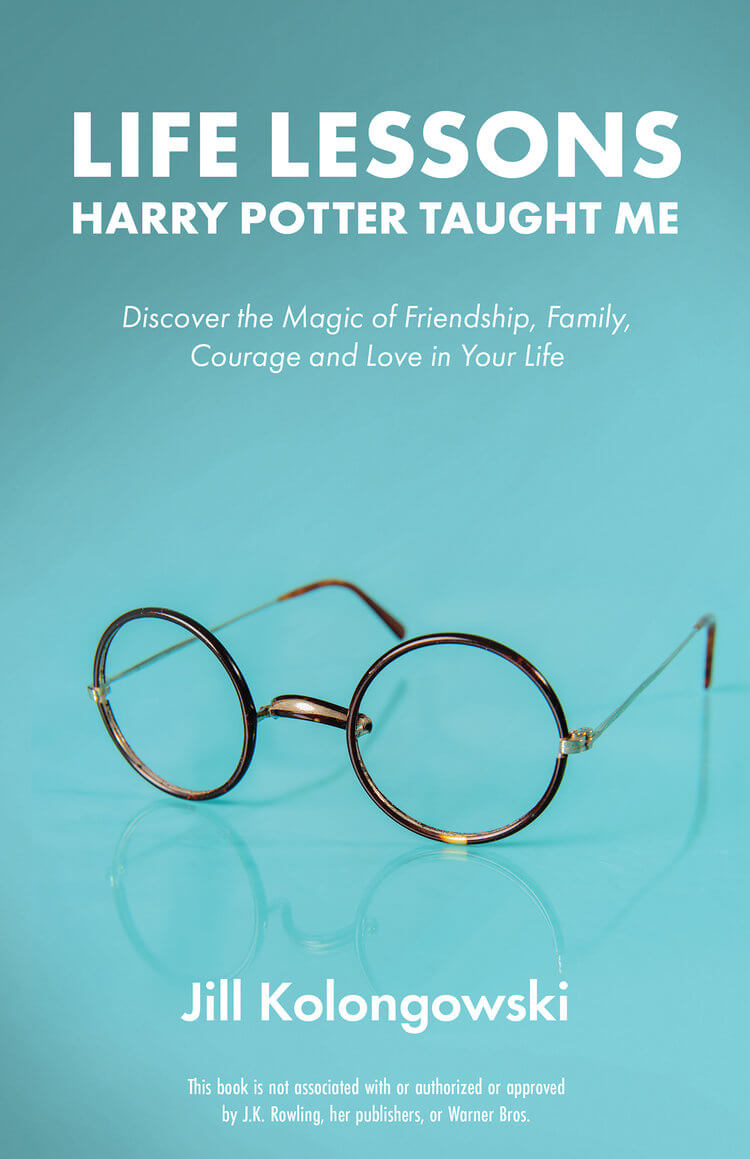
CD: Your debut book is called Life Lessons Harry Potter Taught Me. The Harry Potter series is a cultural phenomenon, one that millions of people are familiar with and devoted to. Tell us more about your experience with Harry Potter. When did you start reading the books? What made you decide to write a book about Harry Potter?
JK: I read Sorcerer’s Stone when I was 12 years old. The first two books in the series were already out by then, and my younger sister read them first and told me I HAD to read them. I was hooked. I’d always loved books about kids being extraordinary on their own (I loved The Boxcar Children and Lloyd Alexander’s The Chronicles of Prydain), and my sister and I loved to play orphan (sorry, Mom and Dad). It wasn’t about the fact that most great children’s stories begin with lost parents, but it was about the idea that children had power and agency, and could really do something with that power. I’ve loved Harry Potter my whole life —reading and rereading, standing in line for each midnight movie showing. I’m kind of unusual in that I didn’t partake much in the online Harry Potter fandom — I didn’t read fan theories, I didn’t go to book release parties. I felt weirdly competitive and private about Harry Potter. I thought that someone couldn’t possibly love it more than I did, and in a way, I wanted to keep Harry Potter all to myself. That’s been one of the really beautiful things about writing this book—I’m engaging with the Harry Potter community in a way I was too afraid to when I was younger. And I’m so glad! I regret not having done it sooner. This book and Ulysses Press are unusual too—rather than authors submitting manuscripts, the press comes up with ideas they see as missing in the market, and find writers to do it. The editor put out a call for writers on a vague “Harry Potter project” and a friend of mine saw the call, knew I loved Harry Potter (I had once sorted all 50 members of our online writing group into Harry Potter houses, with detailed explanations about why), and sent the information to me. As soon as I heard that the project was a book about lessons learned from Harry Potter, I was elated. If you read the book, you’ll see that I don’t really believe in fate or destiny, but oh did I feel like this was the book I’d been waiting my whole life to write, even if I didn’t know it. I was ready to make that private love public. And thank the Goddess Hermione, Ulysses liked my pitch enough to choose me to write it.
CD: In your book, each chapter is named after a Potter-universe spell and subtitled with the subject/”life lesson” of the essay. How did you match each spell with each life lesson? Why did you choose to structure the book in this way?
JK: When I was considering how to organize the book, spells were my very first thought. I considered a few alternate ideas — organizing around people, or around places in the Harry Potter universe (the Divination classroom, Hogsmeade, the Gryffindor common room, etc.), but the spells felt right from the very beginning. Some of the spells came really easily (like “Wingardium Leviosa” for the chapter about Hermione, or “Riddikulus” for the chapter on laughter), but others were harder to match. Should “Legilimens” (the spell used to read minds) be about empathy and kindness, or about self-examination (which is where it ended up, in the good and evil chapter)? I made a list of spells that appeared in the books and when they were used, and tried to use them as a metaphorical bridge. Other than “Wingardium Leviosa,” my favorite is probably “Lumos” as a metaphor for curiosity and wonder. For us Muggles, the real magic in the series is the thing that’s most inaccessible to us, so pairing spells with themes seemed like a way to give readers metaphorical access to that magic.
CD: People of all ages are obsessed with the Harry Potter series and, like you, could or do write about their feelings for Rowling’s creation. What do you think makes these books so widely loved?
JK: The world of Harry Potter is so beautiful — I think as kids, it allowed us to enact many of our deepest-held fantasies — being able to breathe underwater, being able to fly, riding dragons, flying on broomsticks and petting baby unicorns, but also being powerful and being trusted to do great things. But even more than the aesthetic joys of the series, I think the genius of the series is in the complexity of the characters. Harry is the hero, yes, but he’s also kind of terrible — while often being fiercely good, too. Snape is a true hero, but he’s also a coward and can be cruel. And Dumbledore is kind and forgiving and also manipulative. Hermione is a beautiful, loyal friend, but is sometimes inflexible. Ron adopts Harry like he’s family, but his jealousy and insecurity make him occasionally fickle. And which of us hasn’t been all of these things at the same time? For many of the characters, those imperfections are what make them great, when they’re humble enough to trust each other and work together. They are allowed to succeed despite their flaws, and even because of them. The series is so beloved because we get to escape into the world, and at the same time, find ourselves there.
CD: You write primarily creative nonfiction and have had many essays published in various journals. Why do you choose to write creative nonfiction rather than fiction? Where do you find your inspiration to write essays?
JK: I started off as a fiction writer because I started off as a fiction reader. My first love was fiction, and I only discovered creative nonfiction in college. I needed an elective and since I was terrified of poetry, I took creative nonfiction with Marcia Aldrich and realized that that’s what I had been writing all along. All of my short stories had been true stories with my friends’ names changed, or wish fulfillment of some kind. As much as I still love and admire fiction, I feel incapable of writing it. I never had that thing that fiction writers seem to have of walking around with characters in their heads. All I had (and have) are true stories, and the only way I seem to be able to write is to try to render those stories as vividly and truly as I can. In college I read an essay by Lisa VanAuken in Fourth Genre called “Rooster-Fish.” The entire plot of the essay revolves around her finding a cockroach in her apartment (though it becomes about fear and self-doubt instead), and that was a revelation for me — that nonfiction doesn’t have to be big or splashy in order to create meaning. For inspiration, I love finding everyday oddities. I write down strange bits of overheard conversations, or images that strike me. I once heard a man on the bus say to the driver that he felt like his whole body was burning, and I made an essay out of that. My neighbor told me one day that a river runs underneath our street (I’m still not even quite sure what he meant), and I wrung an essay out of that. A few weeks ago, I came home to find the sky on my street full of bubbles. It took me several minutes to find the child using a bubble machine up on a high balcony, but it didn’t matter — the image of a sky full of bubbles stuck. I never really know what to do with these oddnesses, or what meaning or synchronicity I will find, but I enjoy the process of trying to find it. Like VanAuken’s essay, I think our lives are built on these small moments as much as the big ones, so I am always fascinated by that smallness.
CD: Aside from JK Rowling, who are some writers who you love and/or who inspired you to become a writer?
JK: I think I’m strange in that I rarely felt like I had to be a writer or that I wanted to be just like so-and-so. I loved (and love) reading so much that I was always writing, too, from a very early age. They seemed like two processes that went together, and I don’t remember ever making the conscious decision to be a writer. I just wrote — mostly terrible stories about finding baby deer in the woods and keeping them as pets. As a young reader I loved Brian Jacques’s Redwall series (for its lavish food descriptions and intricate plotting—kind of like Game of Thrones for kids), and Louisa May Alcott’s Little Women (for the characters), and as I got older I loved Lolita (for its language) and Middlesex and Margaret Atwood and Toni Morrison, even if I was still learning to understand them. By far the biggest influences on me as an essayist have been Eula Biss (for her braided and fragmented essays), and Ryan Van Meter (who is a sensory detail genius), and most especially, Jo Ann Beard. Her book The Boys of My Youth is the book of nonfiction I return to most often. Her voice, her rendering of young adulthood, and her interrogation of memory is something I aspire to with everything I write.
CD: Which Harry Potter house would you be in and why?
JK: I spent most of my life thinking I was a Ravenclaw (brainy, loves books, etc. etc.), but as I’ve grown up I’ve started to grow into and recognize my true Hufflepuff nature (where Pottermore has also placed me). I tend to associate being a Hufflepuff with the kind of work ethic I associate with being Midwestern, and my introvert tendencies also feel very Hufflepuff. I love books, but more as a reader than as a scholar. If I had to enter a common room with a riddle, I’d be trapped outside forever.
CD: What’s next for you?
JK: I’m taking spring 2018 off from teaching in order to do a bit of book touring for Life Lessons Harry Potter Taught Me and I’m also working on revising my second book. It’s a personal essay collection called (for now) Tiny Disasters, and explores the way disasters (large and small, natural and political and personal) and the ways we try to handle them shape who we are. I also have a very large to-be-read stack I can’t wait to get to, and some Harry Potter movies to rewatch. Thank you again for this opportunity!
**
Jill Kolongowski is a nonfiction writer and professor living in Northern California. She is the author of the essay collection Life Lessons Harry Potter Taught Me (Ulysses Press, 2017). She received her MFA from Saint Mary’s College of California, and is also the managing editor at YesYes Books. Jill has been a fellow at the Artist Artsmith Residency, Lit Camp, and the Squaw Valley Community of Writers. Her essays have won Sundog Lit’s First Annual Contest series and the Diana Woods Memorial Prize in Creative Nonfiction at Lunch Ticket magazine. She is a Hufflepuff who grew up in Michigan.
January 18th, 2018 |
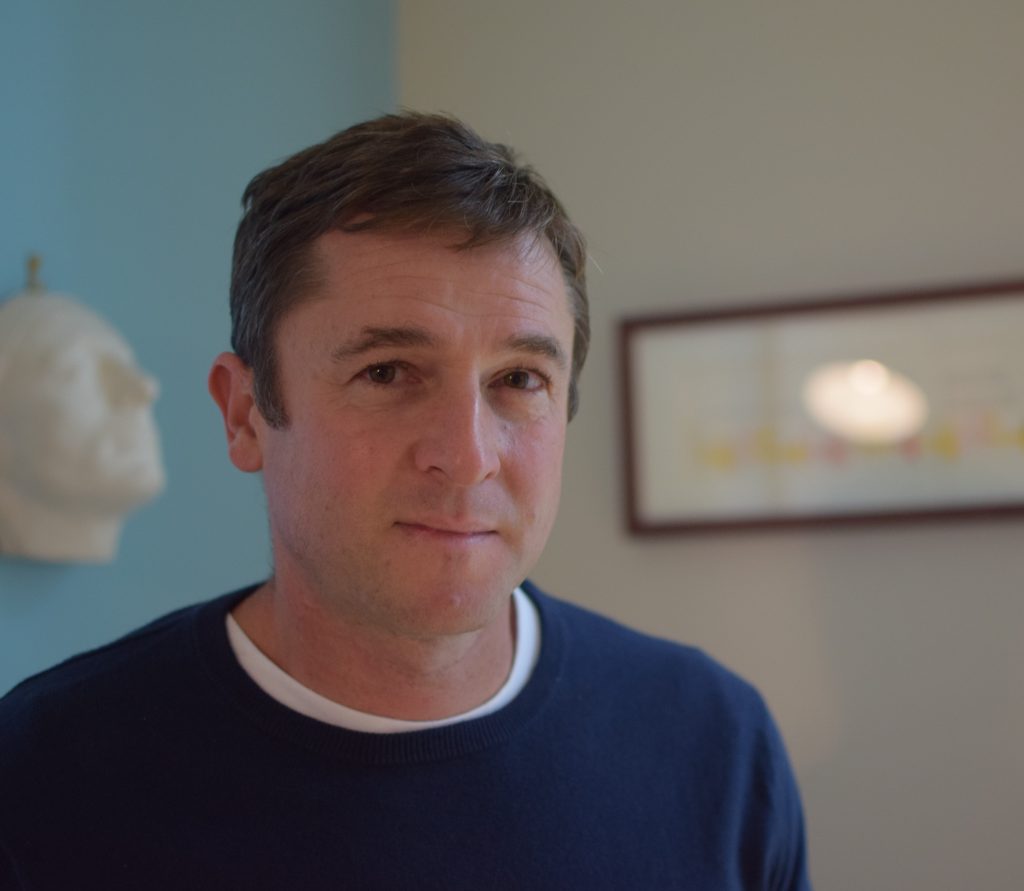 Midwestern Gothic staffer Carrie Dudewicz talked with author Dan Beachy-Quick about his book Of Silence and Song, the formative experience of reading Moby-Dick, writing in the midst of family, and more.
Midwestern Gothic staffer Carrie Dudewicz talked with author Dan Beachy-Quick about his book Of Silence and Song, the formative experience of reading Moby-Dick, writing in the midst of family, and more.
**
Carrie Dudewicz: What’s your connection to the Midwest?
Dan Beachy-Quick: It’s two-fold, really. I was born in Chicago, though my parents left when I was just a toddler. I grew up in Colorado, spending summers in upstate New York. But I ended up going to graduate school in Iowa, and then followed my wife back to Chicago, which became for us a true home—a funny thing, as it was my first one. Stranger still, I worked a block away from where my mother worked, lived just a couple of miles from where she did, and had my first child in a hospital down the road from where I was born. Coming back to the Midwest felt as if it drew a kind of circle or cycle complete.
CD: You’ve lived in multiple regions of the U.S.—the Midwest, Colorado, New York, and Iowa, to name a few. How is the Midwest different from the East or West Coast? What aspect of the Midwest is the most impactful to you and your work?
DBQ: The image that most stays with me—one image in many iterations—is the presence of Lake Michigan on the east side of Chicago. I saw it in every season and mood (both its and mine), from a turquoise blue near tropical in its glow, to waves so wild and rough it looked like the North Sea. I suppose I began to fall in that wide expanse of water, so large it had no other side, no horizon of other land, that I began to feel that this inland sea was a symbol somehow of our human condition, that one contains an unimaginable expanse within the borders of one’s own life—heart and mind, memory and thought—and though the outside appearance is one of steady, almost geologic calm, inside the waves crash wild against those very shores. That paradoxical sense—as of a Russian nesting doll, save the one inside is larger than the figure that contained it—is I think the largest creative gift I received from living those years in the Midwest.
CD: You’ve written both essays and poetry about or related to Moby-Dick. Why does this novel influence so much of your work? What inspired you to write at length about Moby-Dick?
DBQ: I graduated a bit early without any planning to do so, and ended up working in a café in Denver, unsupervised for the most part, and in the midst of the shock of no longer being in school, felt very keenly gaps in my education—the most pressing of which, for some reason, was having not read Moby-Dick. So I got it, and read it during my work hours, helped by the endless coffee and almost complete lack of customers. It was the first time I had to do the work of reading all by myself—there was no one to ask questions to, no one to explain. It was, I think, the formative reading experience of my life. I had earnestly been pursing poetry since high school, and somehow I found within Melville’s pages all the questions about the nature of making, of creativity, of word and world, that I didn’t know how to ask myself. It was, and is, my greatest teacher—and most maddening. I came to feel after reading (twice in a row!) that I had some work to do in that book, though I had no idea what that meant or would entail. I felt like I had to investigate, to be responsible to it, to honor it and question it, to enter into it so as to learn to think according to its own inherent laws—and those instincts have come to shape my entire poetic and critical approach. I simply wouldn’t be the writer (or person) I am without it.
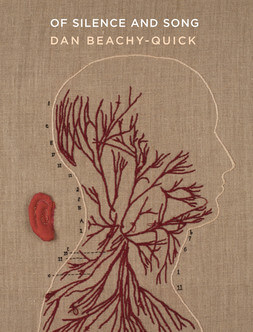
CD: Your most recent book, Of Silence and Song, is composed of many different genres—poetry, essays, travel writing, art, and more. Why did you decide to write across genres, rather than just writing a book of poetry or essays? How did the subject of your book inform the form you decided to write it in?
DBQ: I wanted to find a way to work toward other books I love deeply—the quality in them that any page can hold a small wonder that contains a thought or perception or quote or question that livens and almost enchants the page. The preeminent such author for me is Sir Thomas Browne, whose books are learned but never pedantic, personal but never confessional, philosophic but broken apart by wonder, historic but never pedantic. I also wanted a book that broke apart the expectations that one might have in reading it, and doing so, broke apart its expectations of itself. In some sense, the book is trying over and over again to get at the unspeakable thing hiding within words themselves, and to do so, it seemed the book itself knew it needed to work against the ease of its own consistency. I just kind of followed along. I also wanted to write a book that felt truer to our own inner lives, which seems always open to (and broken by) distractions, random tangents, looking up and away from the matter at hand to notice other things, some small and ephemeral, some annoying, some profound but fleeting. I think I’ve long had this sense, almost a kind of desire, to learn to write in such a way that attention became a form of inclusion rather than exclusion. What worried me in this book was the relationship of silence to sound, of oblivion to knowledge, those paradoxes that reveal and conceal at once the ways that what is known and what is unknown are intertwined—and I found myself writing in order to pursue such difficulties, which often meant giving up entirely any notion of easily coherent form.
CD: The description of your newest book says that one of the joys of life you write about is spending time with your daughters. How does your family, and your role as a father, influence your writing? Was there a shift in how you wrote from before you had children to after?
DBQ: As Robert Duncan said of reading William Blake, “it broke the husk of my hubris.” One of the strangest things I’ve found in being a parent is witnessing over the course of many years a person whose life is wholly tuned outward gradually gain this vast inner realm to which I have only the access of what they tell me. It’s both awe-inspiring and frightening, a kind of wonder-terror, a marvel-fear, as the old Greek word deinos implies. I think the most direct influence—and Of Silence and Song is, I hope, a kind of evidence of what I’m saying—is that I wanted to find a way in my writing to reflect the way in which having children wholly alters one’s sense of self and world, and this occurs at levels existential, intellectual, emotional, and putting aside the “high-minded” concepts, also means that while trying to write about the death of John Keats at 5:30 a.m., having woken up early to do so, sometimes you have to listen to Sesame Street while imagining your favorite poet dying in Rome, because the toddler work up, too—and that’s real, that’s necessary, and to deny it is a kind of violence to the rhythm of the daily-familial that I realized I no longer wanted to accept. The holy ground is continual upheaval, not placid hours. That realization, my two daughters, made me a different person, and to write otherwise would be a dishonor to them.
CD: You’re an accomplished writer and you also teach creative writing at Colorado State University. How do these two roles influence each other? What are the most joyful aspects of teaching for you?
DBQ: At times, I must admit, they feel wholly the same. I’ve come to suspect that the classroom-space and the poem-space are eerily similar. At the very least, a good class as I’ve come to consider it invites confusion in, invites in doubt, and in the midst of such complexities, such difficulties, says, “Here is the place of the gathering; here are the grounds of encounter.” That feels to me just what a poem does. Simone Weil writes of the ethical life of an “activity which does not act.” I’ve come to think of poems and classes in just such light: something occurs in each, an activity that doesn’t act, a radical passivity that isn’t indifference but participation at another level—heart, mind, soul. The joys? That indecipherable sense that understanding inches its way toward us because we’ve humbly asked for its approach.
CD: Nature is a theme in your poetry and essays. Do you write outside? Is there a specific place in which you write?
DBQ: In the summer time, and in nice weather in spring and fall, I’ll write in the gazebo in our backyard, dog wandering the lawn sometimes, sometimes asleep art my feet. But also—in the early morning in the living room, and speaking of family and writing, at the kitchen table, with the coffee pot on.
CD: What’s next for you?
DBQ: Oddly, I feel like I’m not the best one to ask. I just wait to see what arrives.
**
Dan Beachy-Quick is a poet and essayist, and author most recently of a collection of essays, fragments, and poems, Of Silence and Song, published by Milkweed Editions in December 2017. He teaches in the MFA Program in Creative Writing at Colorado State University, and his work has been supported by the Lannan and Guggenheim Foundations.
January 11th, 2018 |
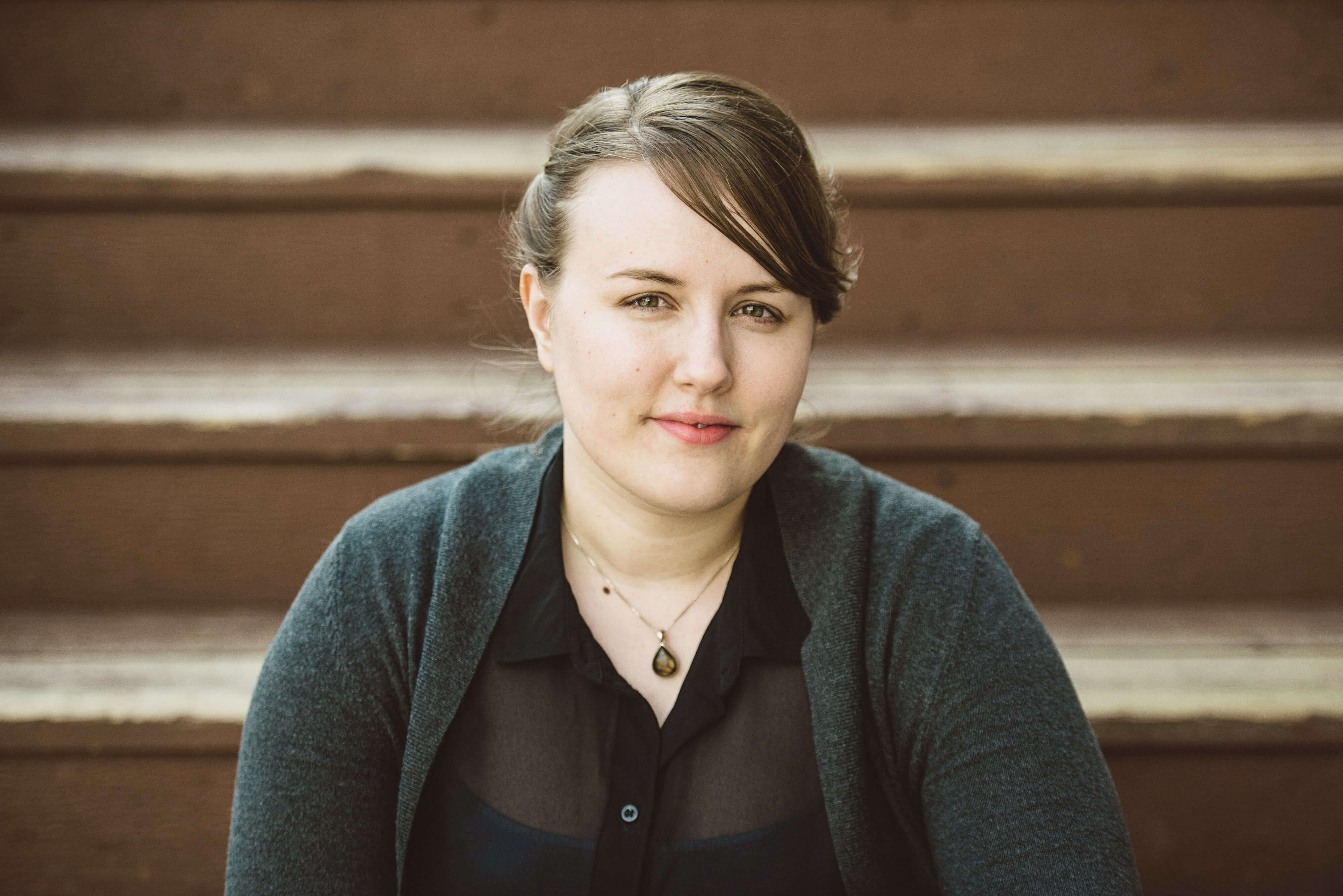
Photo credit: Lucas Botz
Midwestern Gothic staffer Marisa Frey talked with author Caitlin Bailey about her collection Solve for Desire, the driving force of unavailable information, researching for poetry, and more.
**
Marisa Frey: What’s your connection to the Midwest?
Caitlin Bailey: I grew up in Minneapolis, went to school in the Twin Cities, and now live in St. Paul, so my identity is firmly rooted in Minnesota. I love living here, and can’t really imagine living elsewhere.
MF: How does living in Minnesota influence your writing?
CB: I feel really lucky to be a part of the writing community in the Twin Cities. I think we’re fortunate to be surrounded by so many amazing writers—both new and established—here in Minnesota. In addition to being in the midst of such talented writers, we have wonderful arts organizations here. The Loft Literary Center, Minnesota Center for Book Arts, our amazing local presses, the folks who organize and run amazing reading series all over town—all of this adds so much to the experience of being a writer in Minnesota.
MF: Solve for Desire is your debut collection. How long did it take to write, and what was the process like?
CB: I’ve been working on this book for a long time! I wrote the bulk of the poems during graduate school and during the three years after it. Originally, I wasn’t sure how the poems I was writing about the Trakls would fit with the other poems I was writing. I’d set my original manuscript up in sections, separating the Trakl poems from my other work entirely. That arrangement wasn’t working; it felt uneven. In the end, I found that the poems I’d written without thinking specifically of Grete were speaking to similar concerns about desire and loss. Once I blurred the lines between the poems, something seemed to click.
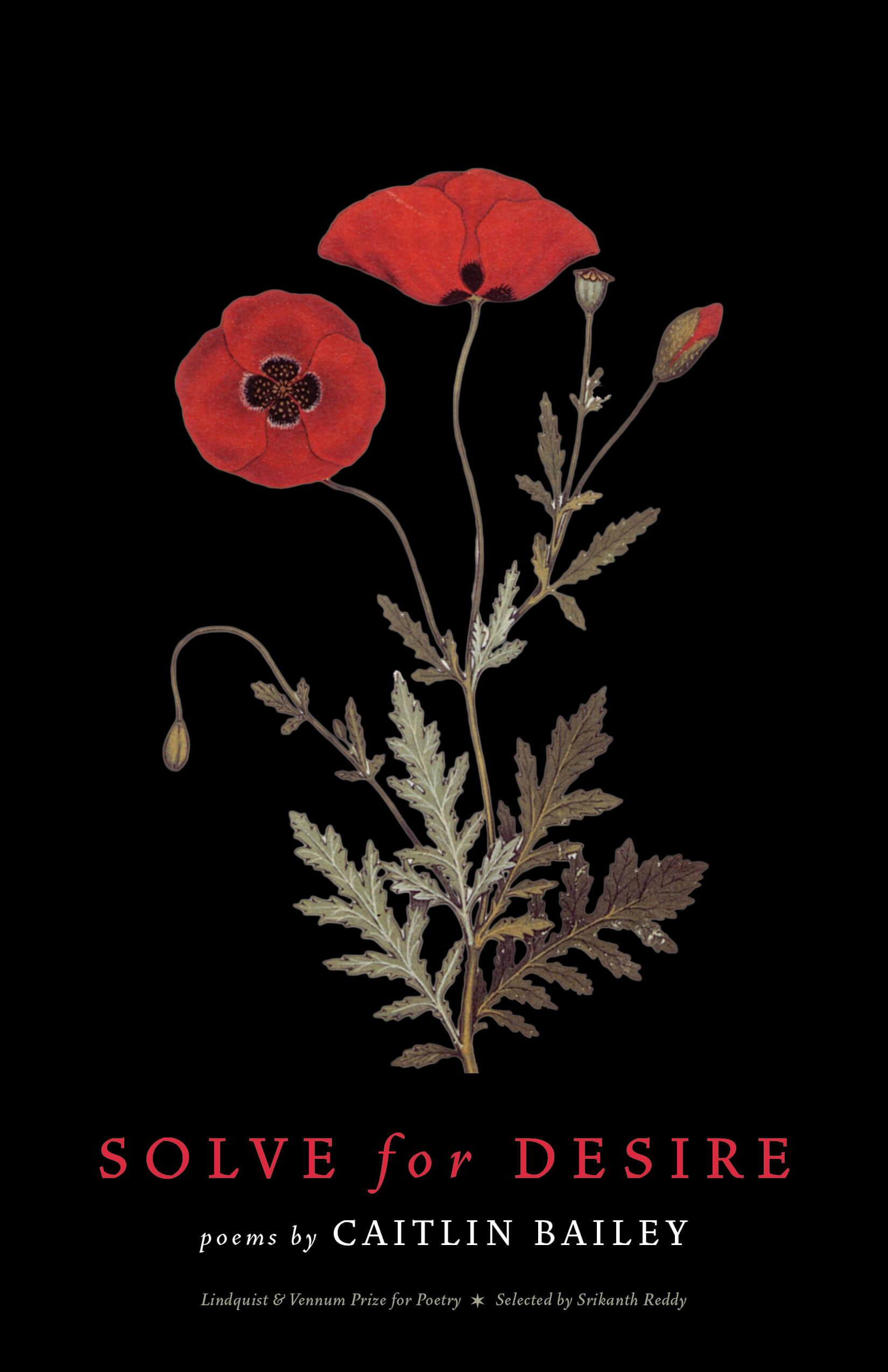
MF: Solve for Desire explores the relationship between the siblings Grete and Georg Trakl—an Austrian pianist and poet, respectively—from the early 1900s. What drew you to writing about them, and focusing on Grete?
CB: When I started writing this book I was actually working on a series of poems about Miklós Radnóti, a Hungarian poet, and a friend of mine suggested that I look at Georg Trakl’s poetry in conversation with Radnóti’s. I quickly became obsessed with Georg and his sister, Grete.
When I started researching Trakl’s life, I was immediately drawn to Grete’s story, which was significantly less fleshed out than Georg’s. Some of my other work from that time was considering the erasure of women’s inner lives from history. Grete was known just as Georg’s sister, but I wanted to explore how she existed in the world as a human who was more than Georg’s sister—who had a rich inner life of her own.
I discovered that no correspondence between Georg and Grete is publically available, and that their letters to each other may have been destroyed. This seemed like a loss to me, but it was also an invitation. I wanted to know what their letters might have said, and it sort of haunted me that I might never know. That was the original impetus to begin writing these poems, and I started writing a series of imagined letters and persona poems in Grete’s voice.
MF: What is the relationship between playing the piano—Grete’s art form—and writing a poem?
CB: I played piano for years as a kid, and I think you can get lost both in writing a poem and playing a piece of music. There’s a sense of discovery and possibility in both kinds of art; writing a line that’s really working is a bit like finally playing a song effortlessly.
MF: How did you go about researching for the collection? When did you rely on fact and when did you rely on your imagination?
CB: I don’t speak German, so researching for the collection was definitely a challenge. Most Trakl biographies are written in German, but I bought any book on Trakl in English I could find. Most translated collections contain some biographical information, and I was able to find a few other books with a fair amount of information about Georg and Grete. Researching was also challenging in that not all sources agreed on basic facts. It’s unclear whether Georg’s death was a suicide, or at what age certain events occurred. I tried to be accurate when possible, but I also had to accept that I wasn’t going to have all of the facts.
I used the outlines of the Trakl’s lives as the backbone for the poems, but I expanded on what I could find and imagined some situations. For example, in the poem “Wild Boat,” I write that Georg died in Poland, which is true. The rest of the poem is an exploration of how Grete might have dealt with Georg dying. In “The Pond,” I write about a time when Georg was very young and walked into a pond. He almost drowned, and was only saved because someone spotted his hat floating on the water. I found brief mentions of this incident in books, but I imagined what it might have been like for Grete to observe and consider this incident and its implications.
MF: The collection began as an imagined letter from Grete to Georg. What are some challenges and benefits of writing a persona poem?
CB: I’ve always been drawn to research in the service of poetry, so persona poems are especially intriguing to me. I didn’t want these poems to be sensational, so I spent a lot of time thinking about how I could make them feel true. In Grete’s case, I didn’t have any source material to work from, so I was starting from scratch. Projecting my own feelings and desires onto someone else’s life isn’t something I did lightly, but my goal in writing these poems was to honor Grete.
MF: What inspires you to start a poem?
CB: Generally, I write poems in two ways. One way I start a poem is with a specific idea/person/event, like in some of my poems written about Grete and Georg. If I have something specific I want to convey, that can help me structure my writing. The other way I typically start a poem is with a particular line or image. Sometimes I’ll use a line written months or years ago and write from that. This way of writing a poem is much more open-ended, and where I find myself beginning lately.
MF: What is the best advice about writing you’ve ever received?
CB: Read more. Whenever I feel stuck in my own writing, I read. I have old favorites I can return to, but I’m always looking for new writers, too. When a poet does something with language that I find exciting it motivates me to write.
MF: What’s next for you?
CB: I spent the last couple of years editing and rewriting Solve for Desire, so I’m excited to work on some new poems. I’m in a space now where my next project is completely unknown, and that’s kind of exciting.
**
Caitlin Bailey is the author of Solve for Desire, winner of the 2017 Lindquist & Vennum Prize for Poetry, selected by Srikanth Reddy. Her poems have appeared in Prairie Schooner, Hayden’s Ferry Review, Carolina Quarterly, Verse Daily, and elsewhere. The recipient of a Loft Mentor Series award, she received an MFA from Hamline University and lives in Saint Paul, Minnesota.
January 5th, 2018 |
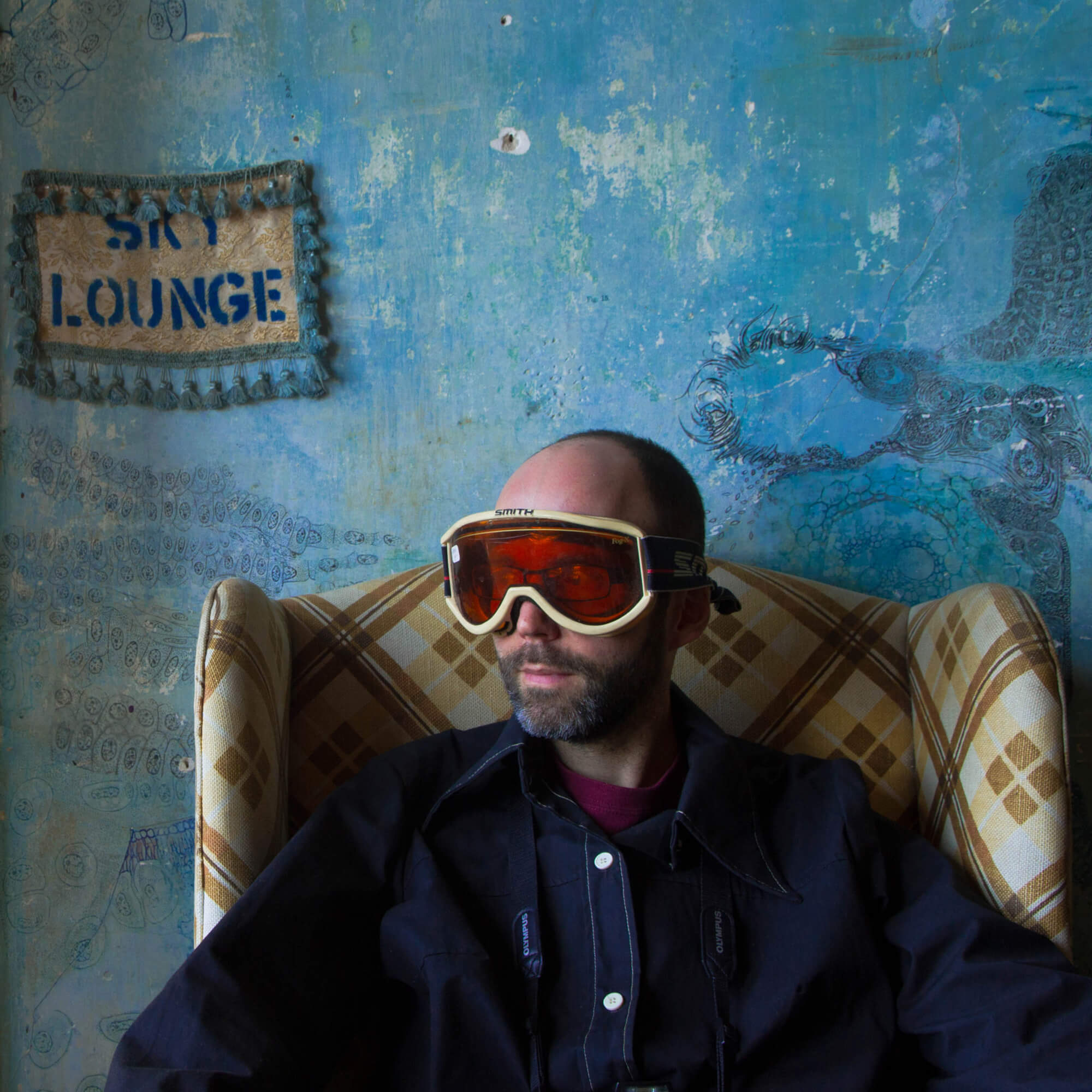 Midwestern Gothic staffer Sydney Cohen spoke with photographer Steven Lang about his creative process, the importance of negative space, and more.
Midwestern Gothic staffer Sydney Cohen spoke with photographer Steven Lang about his creative process, the importance of negative space, and more.
Steven Lang was born and raised in St. Paul, Minnesota and earned a B.F.A. from the University of Minnesota. He is a photographer and writer, with fiction published in the Milkweed Editions book Fiction on a Stick, The Art of Wonder, published by the Minneapolis Institute of Art, and several literary journals including Cutbank and Slush Pile Magazine. His photography has appeared in Der Greif, Momma Tried, Minnesota Monthly, and is forthcoming in Romka Magainze.
***Sydney Cohen: What is your connection to the Midwest?
Steve Lang: I think Donald Trump is just terrible. But, to your question, I was born and raised in Minnesota, attended the University of Minnesota, and still live in the state. Wisconsin is just a short drive from the Twin Cities, where I live, so I’m very familiar with the culture of both states, which, taken together, I think are emblematic of the Midwest. Minnesota, however, is unique among Midwestern states in some ways—parts of northern Minnesota are far more remote than anywhere else in the Midwest, for example, and Minnesota is also much colder in winter. But I do very much identify with being “Midwestern” and am always interested in what defines and distinguishes us from the rest of the country.
SC: What launched you into the world of photography?
SL: I have a BFA in visual art. My focus initially was painting. After graduation I became interested in collage, and eventually my collage work got so intense I developed repetitive stress disorder and had to stop. I had little choice but to pack up all my art supplies and start physical therapy. That was about six years ago (when the idea of a Trump presidency was still science fiction!). As I recovered, I needed to find a creative outlet that was visual in nature, but also physically “easy.” Photography fit the bill. I had taken photo classes in college and learned on a manual film camera, so photography didn’t present a huge learning curve.
SC: Your photographs contain mundane subjects but have a fairytale quality about them. What interests you about the interplay of the everyday and the dreamlike?
SL: My paintings and collages (when I was making them) also contained mundane subjects with dreamlike qualities, so this makes sense. I have probably always been looking at the world that way, and now I look at it that way with a camera. I’ve always been prone to drift into daydreams, and I think I tend to do something similar when I’m walking around taking pictures. Also, Trump=bad.
SC: In your photography you use framing in a really interesting way, capturing single subjects in negative space. What speaks to you about this specific framing, and what feelings does this negative space elicit through the photograph?
SL: Negative space is really important in painting, and that’s true across many styles, time periods, and cultures. If you can see negative space well you can probably draw well. Beginning artists tend to focus on line, which is just one quality among many. Beginning photographers tend to focus on subject matter instead of composition, a big part of which is negative space. A typical beginning photo “blunder” is a picture of someone with a tree coming out of their head. People don’t realize the flatness they’ll be dealing with once the picture exists. Framing is another aspect of the same thing. What to include, and how much of it. There are technical limitations because camera equipment is what it is, but within those limitations there are still infinite choices to be made regarding framing. I like to focus on individual subjects in space because I like the suspension of time that it engenders. I don’t like “decisive moment” photography. I much prefer a lingering, gaze-like quality.
SC: What does your photography capture about the Midwest?
SL: I think you put your finger on it already. It’s the space. Not that everything is totally wide open here, but my approach doesn’t work as well in tight spaces, or even in cities that simply don’t have as much space between things as we do here. I’ve found it difficult to photograph in cities in the south and on the east coast, where even towns of moderate size are much denser. There’s so much “in” a photo in those places—plants, buildings, cars, people, everything is crammed in—even the air seems thicker. For me, it’s too much. I would be the wrong person to send to Havana or Tokyo or London to try to capture that kind of density and intricacy. Maybe I could do the outskirts where there might be some austerity and restraint I could work with. That’s what I love about the Midwest. There’s something considered and measured about almost everything.
SC: You also have short stories published in various literary journals. How do photography and fiction work in conversation with each other?
SL: Photography works differently than fiction does. Still photos don’t move or change, but you can’t have a story that doesn’t move or change. A series of photos can be considered a “narrative” I suppose, but really movies are the only true storytelling that photography affords. And it’s rare, especially these days, for a film to be equally visual and verbal—most are driven by dialogue, like plays. Beyond that, even staged photographs are considered by most people to have an ontologically one-to-one relationship with reality. So, in their intrinsic forms, photography and fiction are at odds with each other. Beyond that, you can’t read and look at a photo at the same time. It’s one or the other, so any conversation between them would really be a series of soliloquies. This can work, however. A great example is the book House of Coates by Brad Zellar. The photographs in the book were ostensibly taken by the protagonist, Lester B. Morrison, but in reality they were taken by the photographer Alec Soth. This layer of fictionalization with respect to the photographs helps tie the two mediums together in this example, but I think generally making photographs and fiction work together is a tall order.
SC: Your short story, “Considerable Complexity,” is about unrequited love, the banality of small towns, and a writer’s struggle to get published. What inspired you to write this piece?
SL: The story began the way most of my stories do, with a single image, in this case a lonely, isolated science fiction writer from northern Minnesota trying to check his mailbox for rejection letters only to find it frozen shut. This idea popped into my head as a fully formed vignette (not something I can really control), and from there I started filling in the details of this writer’s life until a story emerged. Trump really can’t really be the president of the United States, can he?
SC: What would you say is distinctly Midwestern about your fiction writing?
SL: Setting, for one, obviously. But beyond that I think there is that same sensibility of isolation that I focus on in my photography. In my experience, you can’t get too close to Midwestern people, at least not in Minnesota, without making them pretty uncomfortable. This need for distance can be off-putting for people from other parts of the country, especially the South. Intimacy in the Midwest is akin to trespassing in some sense. More precisely, it’s a transgression. Even an omniscient narrator is trespassing in a way, just by knowing the thoughts of a Midwestern character. As a writer, you have to be aware of how narrative distance works on characters from this part of the country. If you get too close, you’ll know because you’ll start to get pushed back.
SC: What’s next for you?
SL: I’m working on more short stories and a novel, and I’m also in the middle of a long-term photography project about Minnesota. My hope is to have all this work completed by Tuesday, November 3, 2020.
***Our Views from the Heartland series is a new series we started to give some recognition to the incredible photographers who submit their photos to us regularly. In it, we talk with some of our favorite photographers who we feel capture the essence of the Midwest in their incredible photos. Each month, we’ll post a new interview with a photographer in which we discuss their creative process, the intersection of photography and literature, and other fascinating topics.
December 29th, 2017 |
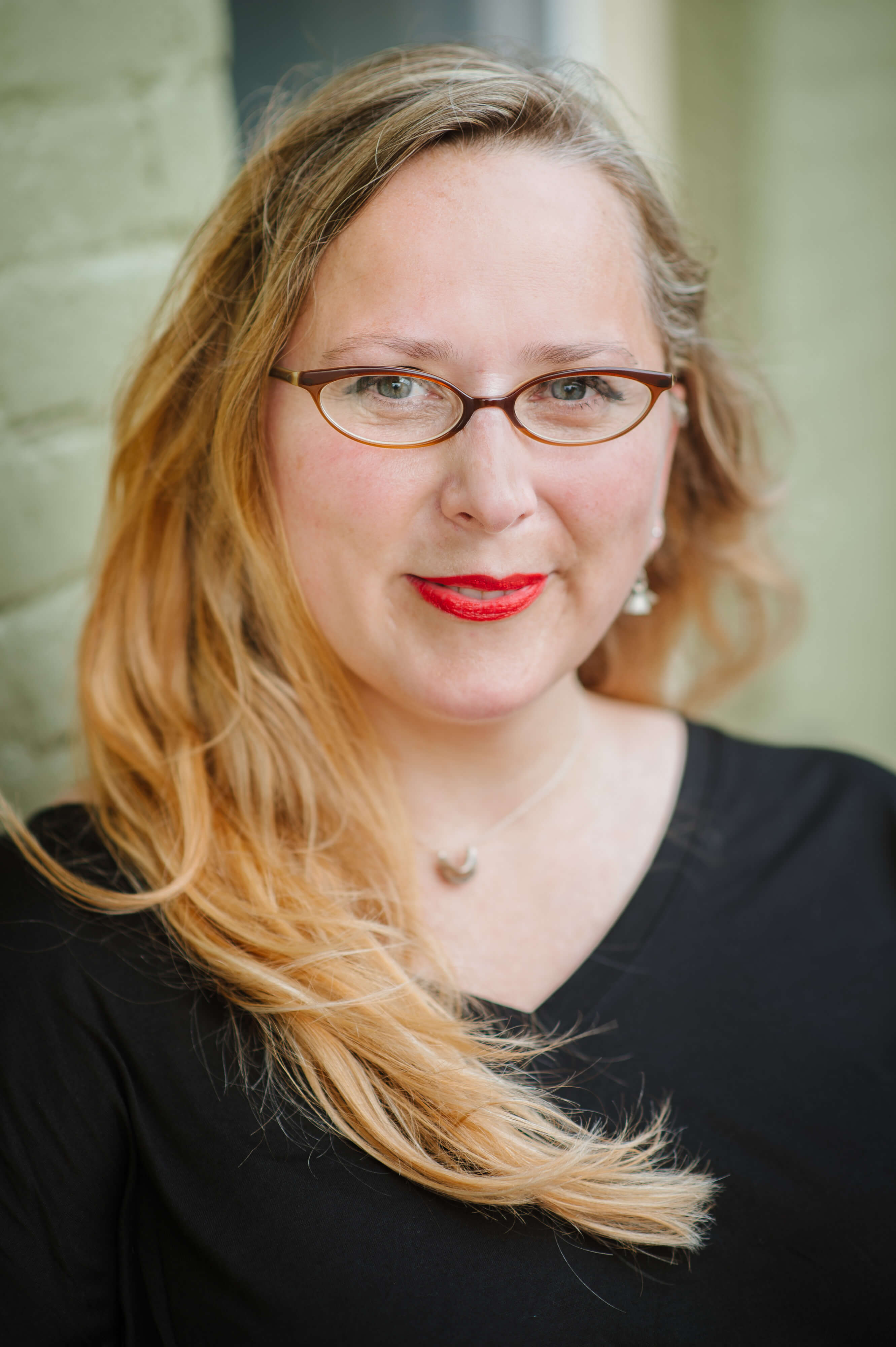
Photo credit: Jesse & Gena
Midwestern Gothic staffer Carrie Dudewicz talked with author Noley Reid about her book Pretend We Are Lovely, writing about disordered eating, how nostalgia influences setting, and more.
**
Carrie Dudewicz: What’s your connection to the Midwest?
Noley Reid: I moved to southwest Indiana thirteen years ago for my first tenure-track teaching job. From fifth grade through graduate school, I lived in Northern Virginia, just outside Washington, D.C. There is a ton I miss: being surrounded by conversations in different languages, being called Ms. instead of Mrs., friends and neighbors of every possible skin tone, intimate concerts at The Phillips Collection and Shakespeare at the Folger, and access to top-notch and varied groceries. But there is also a ton I am grateful to the Midwest for: honest and earnest students, a cost of living that allows a college professor to buy a house and travel some, and somewhat more relaxed and realistic body standards. What I am most grateful to the Midwest for is my husband. We met as soon as I arrived to Evansville, Indiana, and have been inseparable since. He’s a Midwestern boy from Lincoln, Nebraska, and now our ten-year-old son is a Midwesterner, born and raised.
CD: In Pretend We Are Lovely, each member of the Sobel family gives their perspective of their seemingly average family that is actually struggling to hold itself together. Two of the family members shun food and embrace thinness, while the other two eat everything in sight and use food as comfort. Why did you decide to tell this story through each family member’s perspective?
NR: I’ve written a lot of child narrators and when I began writing this book, I intended Enid, the younger daughter, to narrate all of it. But there is so much that happens in the dark rooms each of the family members goes to that I quickly realized every character needed to voice her or his own life.
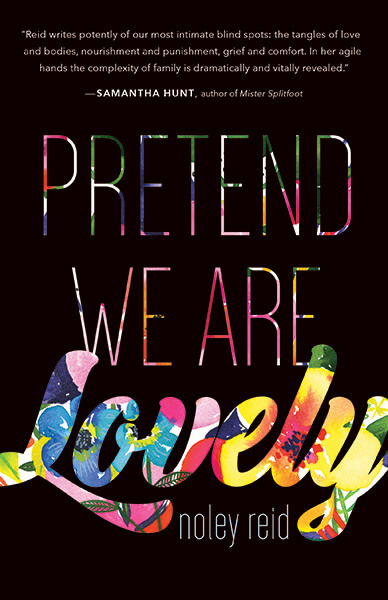
CD: Another author with a Midwest connection, Roxane Gay, came out with a book this year on a similar theme of Pretend We Are Lovely. Hunger, by Gay, is also about the relationship between suffering and food, and struggles with body image. Why do you think stories like this are now being told? How important do you think it is that stories about these topics are written and read? Gay makes it clear in her memoir that writing on this subject was extremely difficult and even scary; did you have a similar experience while writing your novel?
NR: I don’t know why our stories are being allowed now except that social media helps individuals connect with other individuals of a like mind and form groups to offer nurturing encouragement along with political advancement of their like minds. And the more we see fat people claiming their space—instead of apologizing for it or being bullied about it—the more we accept ourselves and accept difference in those among us.
Writing the disordered eating of extreme calorie restriction and bingeing wasn’t difficult for me. I have lived with both obsessions many times in my life and likely always will. Making the obsessions part of my characters’ lives, writing their shame and terror, has made me see myself more clearly. And it has made me accept my food obsession and its physical consequences to my body. The alternative is far too damaging as well as, in my experience, futile.
CD: Even though you set Pretend We Are Lovely in Virginia, was your experience writing it at all influenced by the Midwest, since you currently live in Indiana? How so?
NR: I do think the book is influenced by my experience here. I don’t know that I could have reached for size acceptance for the large characters without my experiences here in the Midwest. That’s not to say it’s all roses here for me or other fat people. There is discrimination we experience every day and it hurts. But seeing my own fat body reflected back to me in the bodies of my students, my neighbors, my son’s friends’ parents, shows me (and all of us) I am human, we are all human. Had I stayed in D.C., the book and I would likely be much darker.
CD: The character of Holly was fascinating in that even though she was the mistress, a character type typically given less sympathetic treatment, she actually was a bit of a hero to the Sobel family. Why did you choose to make Tate’s mistress a complex and likable character, and concurrently, why did you decide to deviate from the “normal” happy ending of the broken family becoming whole again?
NR: Holly is the why-now factor in the Sobels’ life. Sheldon, the family’s son/brother, has been dead for seven years, so why is this the summer and fall when everything comes to a head? Because Holly exists and Francie, Tate’s wife, knows it. Beyond setting the story in motion, though, Tate, the father, needs to learn a lot about parenting before it’s too late and Holly, despite being a college student with no parenting experience, is the one to teach him. For all that to work, she had to be a nuanced, dynamic character.
CD: Why did you choose to set this novel in 1982 rather than the present?
NR: When I was a kid, my family moved a lot. The way I responded to that was to always pine for the last place we’d lived before the most recent move. When I was five, we moved from Dallas to Blacksburg, Virginia. We stayed there four years then, in 1982, moved to Falls Church, Virginia, which turned out to be our last family move. So I had nine school-age years to pine for Blacksburg. Not only did I set Pretend We Are Lovely in Blacksburg during 1982, but I placed the Sobels in my family’s house there, on Eheart Street, with the girls riding the same school bus routes I took. Nearly every place in the book was a real place then and some still are today. Carol Lee Donuts, a place so important to the book, was on College Avenue back then; it still exists now but in a different spot. There was Mr. Fooz; Macado’s; the Farmhouse; Books, Strings, & Things, and Gillie’s. My heart stayed behind in Blacksburg, I guess, so I wrote Pretend We Are Lovely to go back and find it.
CD: What authors have influenced your writing the most? Who do you love to read?
NR: I think I’ve been most identifiably influenced by writers as teachers and mentors, my graduate faculty at George Mason, for example: Susan Richards Shreve taught me to plant immediate and unstoppable trouble in the opening of a story or novel and Alan Cheuse epitomized graceful modesty and kindness. In the pages, William Faulkner, Toni Morrison, Frederick Busch, Louise Erdrich, Eudora Welty, Cormac McCarthy, Gina Berriault, and Dan Chaon have all shown me how to write better.
CD: Where do you write? Do you have a time of day or specific spot for writing?
NR: On the couch in my living room, with my two dogs (Bugsy and Henrietta) snoozing beside me. When I lived alone, I wrote in the mornings before speaking at all so I’d be closer to my dreams. That sounds super weird but I found that state most conducive to writing first person narrators’ voices. Now that I no longer teach but have my own family, I write once my husband and son have been packed off to work and school.
CD: What’s next for you?
NR: I’m writing essays about my experiences with food obsessions, online dating as an anorexic with too much skin, and finding love. I’ve just started writing a memoir, as well.
**
Noley Reid is author of the new novel Pretend We Are Lovely, which The O, Oprah Magazine, called “scrumptious.” Her fiction and nonfiction have appeared in Bustle, Los Angeles Review of Books, Literary Hub, Publishers Weekly, The Southern Review, and Other Voices. She lives in southwest Indiana with her two best boys.
December 28th, 2017 |
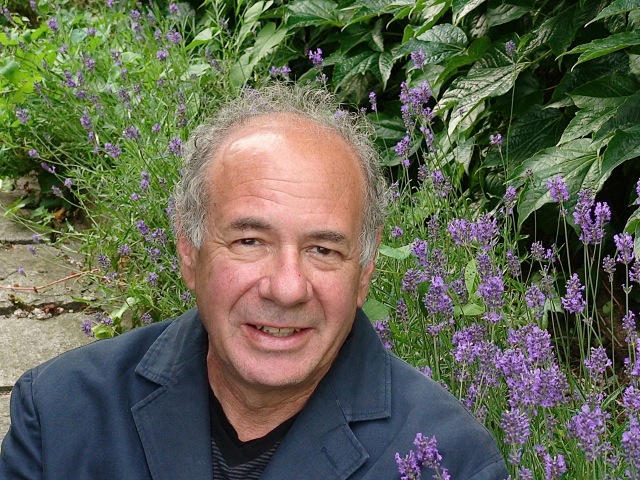 Midwestern Gothic staffer Sydney Cohen talked with author Stuart Dischell about his poetry collection Children With Enemies, writing dramatic monologues, the importance of determination, and more.
Midwestern Gothic staffer Sydney Cohen talked with author Stuart Dischell about his poetry collection Children With Enemies, writing dramatic monologues, the importance of determination, and more.
**
Sydney Cohen: What’s your connection to the Midwest?
Stuart Dischell: I attended Antioch College in Yellow Springs, Ohio, from 1972 to 1976 and the Writers Workshop at the University of Iowa in Iowa City from 1976 to 1978. Those were formative years in my development as a writer and a person. Yellow Springs was an alternative enclave and was not as representative of the region surrounding it as it was of the experimental tradition of the Midwest and certain of its colleges. Going to Big Ten Iowa City was a culture shock for me, but I came to love Iowa. I often took long drives into the countryside, sometimes to Lone Tree, where I visited friends. Iowa was a very progressive state in 1976.
SC: Children With Enemies, your newest collection of poetry, grapples with the themes of time, history, and memory. More specifically, your treatment of time is flexible in that your characters can step fluidly through history. What interests you about the malleability of time, and which periods or moments in history do you gravitate towards in your writing?
SD: I am most interested in how time as in historical time affects a given location. For instance, if I am walking down the Rue Saint-Jacques in Paris, I am walking down the Roman cardo where elephants once labored and later on the same street where the victims of the Terror were led to the Guillotine. For me, this kind of knowledge increases my experience of a place and makes me wonder whether others who have not read or been told of history still feel its ambient presence. Even the blood on its stones. A city is an aggregate of its stones.
Of course, there is the more personal form of time which takes its form as age. One has a hard time often adjusting to one’s age, and one has a harder time accepting the deaths of friends and family.
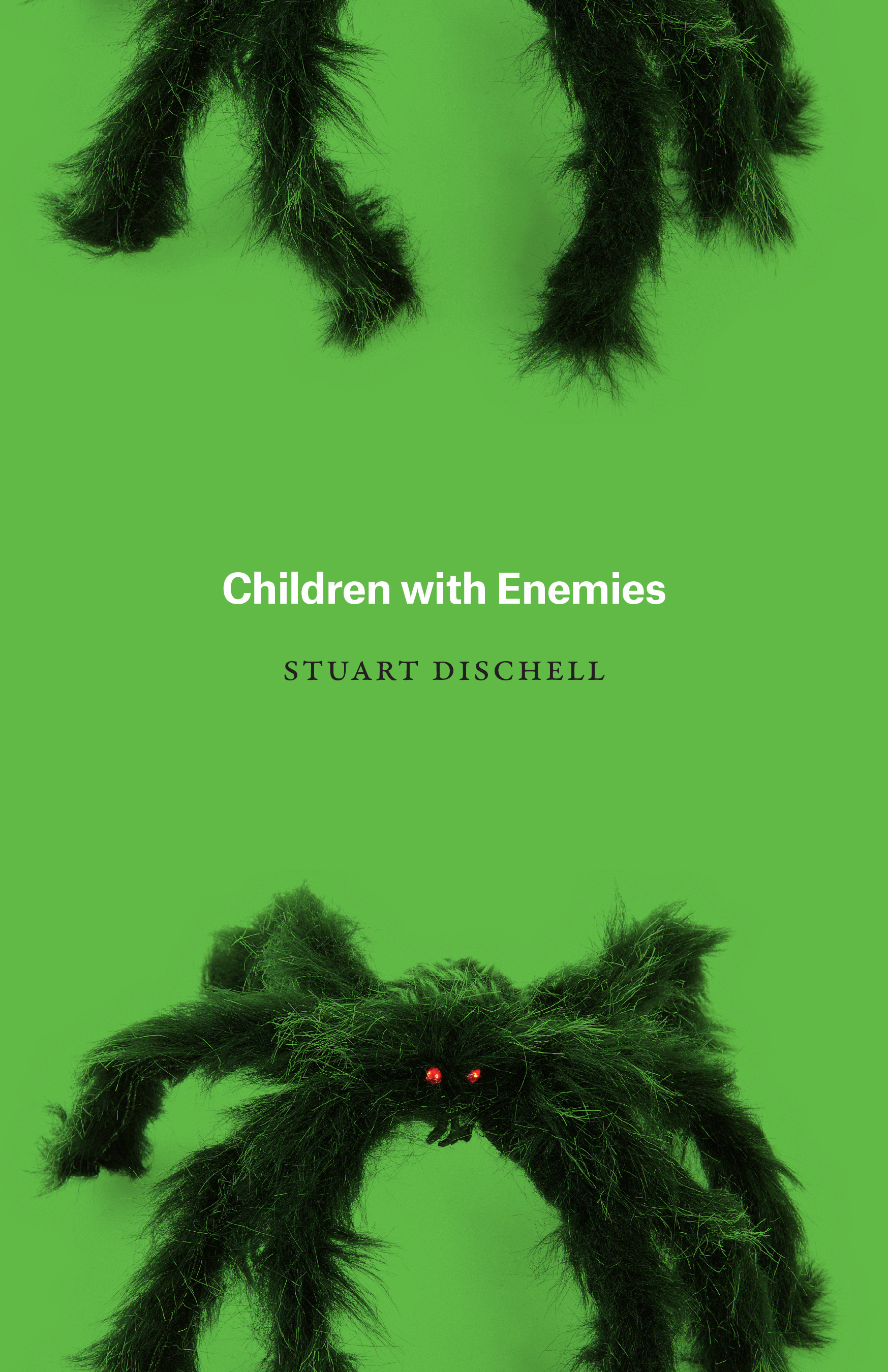
SC: The cover of Children With Enemies, a terrifying hairy tarantula suspended against a shocking green background, is at once playful and menacing. What was your inspiration for the cover, and how does it inform the larger work?
SD: I asked the book designer for a cover that was “bright, child-like, and menacing.” I certainly got what I asked for and more. Rather brilliant. I like it because it appears vital. I am no fan of book covers that depict high art and proclaim the seriousness of the work within.
SC: Your award-winning collection Good Hope Road opens with a sequence titled “Apartments,” in which you explore the range of characters in a contemporary urban setting and construct a landscape of urban consciousness. How much of “Apartments” is imagined and how much is a reflection of your real life experience? Do you view urban spaces with sentimentality or frustration?
SD: The people and circumstances in the “Apartments” series are a mixture of experience and imagination. It is true that for over a decade I lived in a wonderful apartment building in Cambridge, Massachusetts, that was occupied by some very interesting people. As in much of my writing, what you might think is fact is fiction and visa versa. I originally wrote twice as many in the series, but cut it back to the ones that were most essential in their characterizations. I don’t think “sentimentality or frustration” are my only choices for urban spaces. I am an urbanist at heart. In relation to your question about the fluidity of time, I love how one’s own actions take on the significance of the deeds of history when one stands at certain intersections.
SC: The second section of the collection, “Household Gods,” includes two dramatic monologues that stand out for their length and point of view. How does the process of writing a monologue differ from that of writing a shorter poem? What was your thought process behind choosing to include monologues in your collection, and how do they shape the work as a whole?
SD: The greatest problem in writing dramatic monologues is to create and sustain a distinct voice, especially when speaking through an identifiable figure such as Henry Adams. Over the years I have written poems in the voices also of Columbus and Macbeth. In each I have tried to make the poems distinct also by making them formally different. I included dramatic monologues as a counterweight to the many more narrative strategies at work in the “Apartments” section.
SC: Your poetry largely deals with the human condition and the minutiae of everyday life, exemplified in collections such as Good Hope Road and Dig Safe. Is there anything particularly Midwestern about your portrayal of the human experience?
SD: Midwestern writers have had a great impact on my formative reading, particularly James Wright, Sherwood Anderson, Robert Bly, Willa Cather, and of course Ernest Hemingway. From each I learned about craft and the human experience that allowed me to translate these things into my own landscape of childhood, the Southern New Jersey coast, and my subsequent experiences in Boston and Paris.
SC: Who are some poets that inspire you, and why?
SD: Ah, so many. Today I have on my desk the Swedish poet Tomas Tranströmer translated by the great Midwestern poet Robert Bly. This is a new selection of poems I have read in other volumes over the course of my writing life. I remember reading them in my dorm room at Antioch and at the Hamburg Inn in Iowa City. Reading Tranströmer’s poems bring me back to the person I was when I started writing. I guess that’s good.
SC: With eight collections and chapbooks, you have an impressive repertoire of published works. Is there anything you wish you would have known when you started writing that you know now?
SD: Writing has been my great friend throughout my life. Sometimes when I have not been creative, my writing has waited for me to arrive, as it were. Being anything in our culture requires determination. Perhaps being an artist or writer requires more fire in the belly. My friend, the poet and non-fiction writer Jeffrey Greene, told me when we were graduate students that you have to want it bad enough. I wanted to be a writer since I was a teenager and I am grateful to have published my books but even more grateful to want to keep writing. If I had known something before, it would be a small thing: I would have kept better journals of my days and always wrote out my early drafts of poems in them. I have done so periodically but not methodically.
SC: What’s next for you?
SD: I am just finishing a novel with far too many characters.
**
Stuart Dischell is the author of Good Hope Road, a National Poetry Series Selection, Evenings & Avenues, Dig Safe, Backwards Days, Standing on Z, and Children with Enemies. His poems have appeared in The Atlantic, Agni, The New Republic, Slate, Kenyon Review, Ploughshares, and anthologies including Essential Poems, Hammer and Blaze, Pushcart Prize, and Garrison Keillor’s Good Poems. A recipient of awards from the NEA, the North Carolina Arts Council, and the John Simon Guggenheim Foundation, he teaches in the MFA Program in Creative Writing at the University of North Carolina Greensboro.
December 21st, 2017 |
 Midwestern Gothic staffer Carrie Dudewicz talked with author Tayari Jones about her book An American Marriage, her identity as a Black American, the timelessness of American conflicts, and more.
Midwestern Gothic staffer Carrie Dudewicz talked with author Tayari Jones about her book An American Marriage, her identity as a Black American, the timelessness of American conflicts, and more.
 Midwestern Gothic staffer Carrie Dudewicz talked with author Danielle Lazarin about her book Back Talk, the relationships between intimacy and femininity, motherhood, experiencing the Midwest as a New Yorker, and more.
Midwestern Gothic staffer Carrie Dudewicz talked with author Danielle Lazarin about her book Back Talk, the relationships between intimacy and femininity, motherhood, experiencing the Midwest as a New Yorker, and more.
 Midwestern Gothic staffer Carrie Dudewicz talked with author Will Boast about his new novel Daphne, the relationship between journalism and fiction, how to reconcile a Midwest identity with international travel, and more.
Midwestern Gothic staffer Carrie Dudewicz talked with author Will Boast about his new novel Daphne, the relationship between journalism and fiction, how to reconcile a Midwest identity with international travel, and more.
 Midwestern Gothic staffer Sydney Cohen talked with author Mike Harvkey about his book In the Course of Human Events, Midwestern masculinity, the role of the cliché, and more.
Midwestern Gothic staffer Sydney Cohen talked with author Mike Harvkey about his book In the Course of Human Events, Midwestern masculinity, the role of the cliché, and more.
 Midwestern Gothic staffer Carrie Dudewicz talked with author Jill Kolongowski about her book Life Lessons Harry Potter Taught Me, how to juggle writing, editing, and teaching, her becoming a nonfiction writer, and more.
Midwestern Gothic staffer Carrie Dudewicz talked with author Jill Kolongowski about her book Life Lessons Harry Potter Taught Me, how to juggle writing, editing, and teaching, her becoming a nonfiction writer, and more.
 Midwestern Gothic staffer Carrie Dudewicz talked with author Dan Beachy-Quick about his book Of Silence and Song, the formative experience of reading Moby-Dick, writing in the midst of family, and more.
Midwestern Gothic staffer Carrie Dudewicz talked with author Dan Beachy-Quick about his book Of Silence and Song, the formative experience of reading Moby-Dick, writing in the midst of family, and more.


 Midwestern Gothic staffer Sydney Cohen spoke with photographer Steven Lang about his creative process, the importance of negative space, and more.
Midwestern Gothic staffer Sydney Cohen spoke with photographer Steven Lang about his creative process, the importance of negative space, and more.

 Midwestern Gothic staffer Sydney Cohen talked with author Stuart Dischell about his poetry collection Children With Enemies, writing dramatic monologues, the importance of determination, and more.
Midwestern Gothic staffer Sydney Cohen talked with author Stuart Dischell about his poetry collection Children With Enemies, writing dramatic monologues, the importance of determination, and more.




